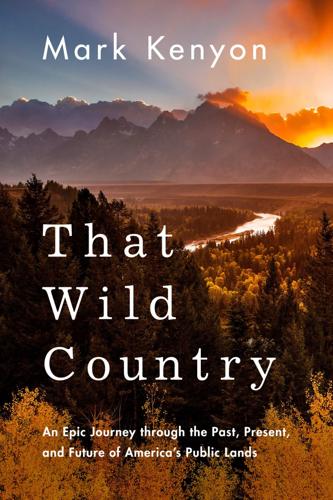
That Wild Country: An Epic Journey Through the Past, Present, and Future of America's Public Lands
by
Mark Kenyon
Published 2 Dec 2019
Andy and I ate a dinner of freeze-dried lasagna in the illumination of our headlamps, a hundred yards down along the edge of the river, grinning and laughing, exhausted from that extraordinary first day, swapping stories of the past and wondering about what might lie ahead. In my sleeping bag later that night, I marveled at how lucky we were and thought of a line from one of Bob Marshall’s Forest Service colleagues, Aldo Leopold, a public-land forefather in his own right. “I am glad I shall never be young without wild country to be young in,” he said. “Of what avail are forty freedoms without a blank spot on the map?” This was not the first backcountry adventure Andy and I had shared, but it was shaping up to be one of the most unique.
…
We’d planned to use the rest of the day to hike six to eight miles farther upstream until we found a good put-in point to begin our float back downriver. Ten minutes out from camp, we came to a large wooden sign announcing that we were officially entering the Bob Marshall Wilderness, which was encompassed within the national forest we’d passed through. Bob Marshall and his colleague Aldo Leopold, less than a hundred years prior, had been some of the first and most acclaimed supporters of a designated wilderness area. Both having worked for the US Forest Service, they knew the value of public lands, but also saw how quickly those places could become degraded and overused, even when under the authority of the federal government.
…
Protections were rolled back as the nation entered an era ruled by greed and fear. Alarmed by the damage being wrought in the name of industry, a new wave of conservationists stepped up to the plate. But this new generation of advocates, inspired by Pinchot, Roosevelt, and Muir, conspired to leave their unique mark on the young movement. Men like Bob Marshall and Aldo Leopold championed the revelatory idea that, in some cases, the best use for the nation’s land might not involve extracting natural resources or development. They argued that wilderness left in its primitive state might be the highest and most important use possible. Leopold was the first to propose the radical idea in any official capacity.

Green Philosophy: How to Think Seriously About the Planet
by
Roger Scruton
Published 30 Apr 2014
Massingham, Tories like Lady Eve Balfour, secular gurus like Rudolf Steiner, and eccentric radicals like Rolf Gardiner, who borrowed ideas from left and right and who has even been identified (by Patrick Wright) as a kind of fascist.1 American environmentalism incorporates the nature worship of John Muir, the radical individualism of Thoreau, the transcendentalism of Emerson, the ‘ecocentrism’ of Aldo Leopold and the social conservatism of the Southern Agrarians – a group of writers typified by the nostalgic poet Allen Tate, and represented in our day by Wendell Berry.2 French environmentalism is the child of pays réel conservatives like Gustave Thibon and Jean Giono, while the German Greens have inherited some of the romanticism of the early twentieth-century Wandervogel movement, as well as the vision of home and settlement so beautifully expressed by the German Romantic poets and taken up in our time both by the ex-Nazi Martin Heidegger and, in more lucid and liberal vein, by his Jewish student Hans Jonas.3 Moreover, environmentalists today are aware of the ecological damage done by revolutionary socialism – as in the forced collectivization, frenzied industrialization and gargantuan plans to shift populations, rivers and whole landscapes that we have witnessed in the Soviet Union and China.4 Left-leaning thinkers will not regard those abuses as the inevitable result of their ideas.
…
Behind the scenes, however, are those small alliances of friends and neighbours, those groups who are making space for themselves in the nooks and crannies on which the eye of officialdom seldom falls. In Britain and America the environmental movement on the left has been more closely associated with this localized form of action – as in the followers of Richard Jefferies and Aldo Leopold. Although eager to combine environmental rectitude with egalitarian distribution, this quieter leftism has avoided overt politics, and sought for those places on the edge of society where it can show by example how to live in another, less damaging and more socially scrupulous way. Thus, taking inspiration from the writings of the Russian anarchist Peter Kropotkin, the British writer Colin Ward has advocated small-scale initiatives, outside the purview of the state, in which ‘mutual aid’ takes the place of legislative edicts, to bring about goals that are both environmentally friendly and in conformity with social justice.95 Ward’s writings have influenced a generation of British environmentalists, including Ken Worpole, Simon Fairlie and Ian Christie, who have tried to develop real alternatives to the environmentally destructive and socially exclusive ways of using natural resources.96 I will return to their endeavours later, since it seems to me that this ‘civil’ form of left environmentalism opens the way to an alliance in which conservatives and free-marketeers could also be included.
…
The general problem of motivating force comes to the fore too in considering the other strategy of environmental ethics, which is the attempt to develop a ‘new ethic’ in which the anthropocentric reasoning that has hitherto held our species captive is somehow left behind, to be replaced by reasoning that is ‘biocentric’ (E. O. Wilson), ‘geocentric’ (James Lovelock), ‘ecocentric’ (Aldo Leopold, Holmes Rolston, Arne Naess) or even ‘physiocentric’ (Meyer-Abich). The literature here is vast; much of it is also tortured, and in a peculiar way private, like the literature of religious conversion, which tells the reader that the ‘scales have fallen’ from the writer’s eyes. Naess identifies ‘deep ecology’ as a philosophy of Self-realization, understanding Self as âtman, the comprehensive force in which, according to Hindu belief, all living things participate.
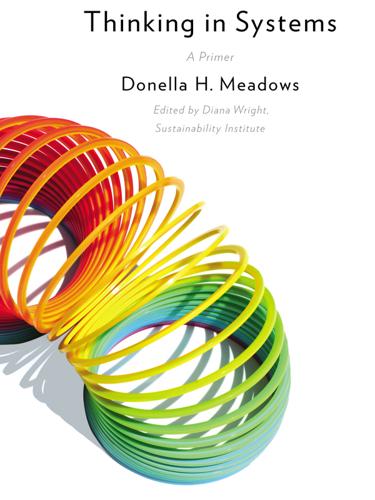
Thinking in Systems: A Primer
by
Meadows. Donella
and
Diana Wright
Published 3 Dec 2008
PART TWO Systems and Us — THREE — Why Systems Work So Well _____________ If the land mechanism as a whole is good, then every part is good, whether we understand it or not. If the biota, in the course of aeons, has built something we like but do not understand, then who but a fool would discard seemingly useless parts? To keep every cog and wheel is the first precaution of intelligent tinkering. —Aldo Leopold,1 forester Chapter Two introduced simple systems that create their own behavior based on their structures. Some are quite elegant—surviving the buffeting of the world—and, within limits, regaining their composure and proceeding on about their business of maintaining a room’s temperature, depleting an oil field, or bringing into balance the size of a fishing fleet with the productivity of a fishery resource.
…
That part of us makes Gothic cathedrals and Persian carpets, symphonies and novels, Mardi Gras costumes and artificial intelligence programs, all with embellishments almost as complex as the ones we find in the world around us. We can, and some of us do, celebrate and encourage self-organization, disorder, variety, and diversity. Some of us even make a moral code of doing so, as Aldo Leopold did with his land ethic: “A thing is right when it tends to preserve the integrity, stability, and beauty of the biotic community. It is wrong when it tends otherwise.”10 Expand Time Horizons One of the worst ideas humanity ever had was the interest rate, which led to the further ideas of payback periods and discount rates, all of which provide a rational, quantitative excuse for ignoring the long term.
…
For an example, see Chapter 2 in Donella Meadows, Jørgen Randers, and Dennis Meadows, Limits to Growth: The 30-Year Update (White River Junction, VT: Chelsea Green Publishing Co., 2004). 5. Jay W. Forrester, 1989. “The System Dynamics National Model: Macrobehavior from Microstructure,” in P. M. Milling and E. O. K. Zahn, eds., Computer-Based Management of Complex Systems: International System Dynamics Conference (Berlin: Springer-Verlag, 1989). Chapter Three 1. Aldo Leopold, Round River (New York: Oxford University Press, 1993). 2. C. S. Holling, ed., Adaptive Environmental Assessment and Management, (Chichester UK: John Wiley & Sons, 1978), 34. 3. Ludwig von Bertalanffy, Problems of Life: An Evaluation of Modern Biological Thought (New York: John Wiley & Sons Inc., 1952), 105. 4.

Wilding: The Return of Nature to a British Farm
by
Isabella Tree
Published 2 May 2018
Gerard Manley Hopkins, ‘Inversnaid’, 1881 ‘You may expel Nature with a pitchfork but she will always return’ Horace, Epistles I , 20 BC (quoted by Jeeves to Wooster in The Love that Purifies by P. G. Wodehouse, 1929) The cowman who clears his range of wolves has not learned to think like a mountain. Hence we have dustbowls and rivers washing the future into the sea. Aldo Leopold, A Sand County Almanac , 1949 Contents Timeline Map of the Knepp estate Introduction 1. Meeting a Remarkable Man under a Remarkable Tree 2. At Odds with Everything 3. The Serengeti Effect 4. The Secret of Grazing Animals 5. A World of Wood Pasture 6. Wild Ponies, Pigs and Longhorn Cattle 7.
…
We were poised on the threshold of a new way of thinking about our land and the animals that had governed it before human agriculture even appeared on the scene. It was an experience that would revolutionize our decisions about what to do with the rest of the land at Knepp. 4 The Secret of Grazing Animals One swallow does not make a summer, but one skein of geese, cleaving the murk of March thaw, is the Spring! Aldo Leopold, A Sand County Almanac , 1948 Frans Vera’s book Grazing Ecology and Forest History was translated into English from the original Dutch in 2000, the year we stopped in-hand farming. It sent ecologists and environmentalists all over Europe, but perhaps especially Britain, into a spin. The reverberations washed over us, too – even where we were standing, almost accidentally, with our toes in the water of conservation.
…
They emphasized the importance of ecological networks – joining up hotspots of biodiversity and isolated patches of wilderness so that natural processes can function on a significant scale again. And they championed the role of apex predators in the system – something that the father of modern conservation and, arguably, the first ‘rewilder’, the American author and ecologist Aldo Leopold, had identified half a century earlier. Yellowstone National Park has since become a flagship example of the rewilding movement in the States ever since it was seen that the reintroduction of wolves in 1995 led to a staggering increase in biodiversity – a phenomenon that has become known as the ‘apex predator trophic cascade’.
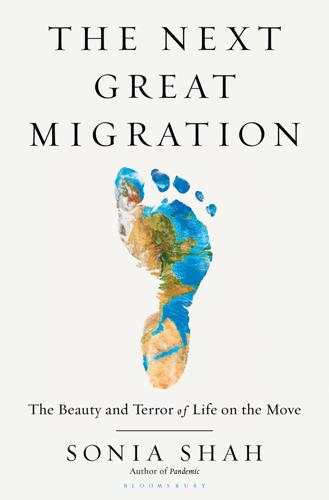
The Next Great Migration: The Beauty and Terror of Life on the Move
by
Sonia Shah
Zoologists in Europe complained about the arrival of American gray squirrels and other North American species (a “terrific invasion of aliens,” as one expert put it in an early 1930s BBC radio series); in the United States they complained about the intrusion of English sparrows and starlings. (A “European invasion of America is upon us,” one zoologist wrote in the New York Times. The starlings were “bad citizens,” and “undesirable aliens,” according to government officials.) The ecologist Aldo Leopold, a friend of Elton’s, railed against the “thoughtless importation of Mexican quail” and how they “diluted the hardy northern bobwhite blood in Massachusetts,” as a journal article entitled “Game System Deplored as a Melting Pot” reported. In Germany, people purged plants deemed foreign16 from the landscape.
…
With the borders around countries such as the United States firmly closed, no one had cause to ponder the political and ecological dilemmas that might arise if migrants didn’t martyr themselves. That would change. 6 MALTHUS’S HIDEOUS BLASPHEMY Between the 1940s and ’60s, scientists documented another knotty ecological phenomenon in nature, one that leading population biologists would call on to warn about the dangers posed by migration. Aldo Leopold, a friend of Elton’s, wrote the first reports about Kaibab in 1943. He called the episode the result of an “upset” in the “balance of natural forces in the ecosystem.” The Kaibab, an isolated thousand-square mile high-elevation plateau bounded by deep canyons in northern Arizona, had been established as a game preserve in 1906.
…
“Defined, ethnically and racially homogenous homelands” were the goal, as one white nationalist and Trump supporter put it. “We can’t restore our civilization with somebody else’s babies,” said Steve King, a Republican representative from Iowa. Antimigrant politicians in the United States mostly refrained from discussing environmental problems of any kind. But antimigrant politicians in Europe, echoing Aldo Leopold, Garrett Hardin, and the other neo-Malthusian ecologists, openly denounced migrants for the environmental burden they supposedly exacted. The antimigrant politician Marine Le Pen planned to remake Europe as “the world’s first ecological civilization” by closing the borders to migrants. “Nomadic” people, she claimed, “do not care about the environment.”

398 DIY Tips, Tricks & Techniques: Practical Advice for New Home Improvement Enthusiasts
by
Ian Anderson
Published 31 Mar 2019
Hacksaws Are Rubbish for Pipes Never put a pipe you’ve sawn off with a hacksaw into a push-fit fitting because the burs around the end are too rough. Always use a rotary pipe cutter which leaves neat, slightly rounded pipe ends which won’t damage the O rings inside the fittings. Making Stuff from Scratch 363. Aldo Leopold’s Iconic Bench How about Aldo Leopold’s famously easy to make bench pictured above? The simple joinery is perfect for beginners, with only straight cuts and mechanical joints. Plus, it’ll look great in the garden as well as being a perfect place to read instructions or for a well-earned coffee break. 364. Or Even a Small Boat?
…
Craftster.org: Online community where people share hip, offbeat, crafty projects. ‘No tea cosies without irony’ is the tag line… Duckworksbbs.com/plans/gavin/mouse: Free plans to build a mouse boat, one of the simplest boats to build in the world. Fornobravo.com/pompeii_oven: Free plans to build a wood fired pizza oven! For-wild.org: Plans to build an Aldo Leopold bench, probably the easiest cool looking bench to build there is. Glen-L.com: The holy grail for home boat builders! Lifehacker.com: Tips to get you through life with a twist of humour and the faintly ridiculous! Stormdrane.blogspot.com: For anything you need to make out of paracord, surely one of the most useful materials.
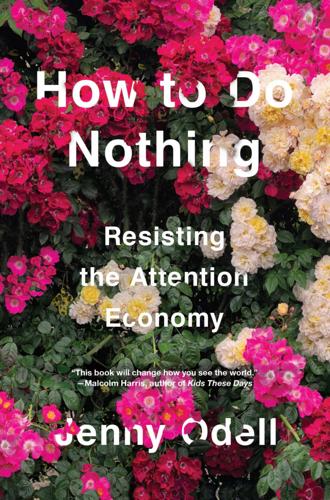
How to Do Nothing
by
Jenny Odell
Published 8 Apr 2019
This privileging, she writes, “comes out of the assumption that human beings are paradigmatic ethical objects, and that other life-forms are valuable only in so far as they are seen as similar to humans.”16 The implication is that the actual paradigmatic ethical object, if there is one, is the ecosystem itself. This echoes the conservationist Aldo Leopold’s observation that “you cannot love game and hate predators; you cannot conserve waters and waste the ranges; you cannot build the forest and mine the farm. The land is one organism.”17 Even if you cared only about human survival, you’d still have to acknowledge that this survival is beholden not to efficient exploitation but to the maintenance of a delicate web of relationships.
…
Conclusion Manifest Dismantling I have thrown away my lantern, and I can see the dark. –WENDELL BERRY, A NATIVE HILL1 If you become interested in the health of the place where you are, whether that’s cultural or biological or both, I have a warning: you will see more destruction than progress. In “The Round River: A Parable,” the conservationist Aldo Leopold writes: One of the penalties of an ecological education is that one lives alone in a world of wounds. Much of the damage inflicted on land is quite invisible to laymen. An ecologist must either harden his shell and make believe that the consequences of science are none of his business, or he must be the doctor who sees the marks of death in a community that believes itself well and does not want to be told otherwise.2 Last week I went on a walking tour of downtown Oakland led by my friend Liam O’Donoghue, an activist and historian who runs the popular podcast East Bay Yesterday.
…
Reinventing the Enemy’s Language: Contemporary Native Women’s Writings of North America, ed. Gloria Bird and Joy Harjo (New York: W. W. Norton & Company, 1997), 24. 15. Kimmerer, 162. 16. Chris J. Cuomo, Feminism and Ecological Communities: An Ethic of Flourishing (London: Routledge, 1998), 106. 17. Aldo Leopold, A Sand County Almanac: Essays on Conservation from Round River (New York: Ballantine Books, 1970), 189–90. 18. Audre Lorde, Sister Outsider: Essays and Speeches by Audre Lorde (Berkeley, CA: Crossing Press, 2007), 120. 19. Ibid., 111. 20. Schulman, 36. 21. Ibid., 33. Chapter 6 1. Henry David Thoreau, “Walking,” The Atlantic, June 1862: https://www.theatlantic.com/magazine/archive/1862/06/walking/304674/. 2.

The Serengeti Rules: The Quest to Discover How Life Works and Why It Matters
by
Sean B. Carroll
Published 16 Feb 2016
The impact on elk, however, was greater: the winter elk population was cut in half between 1995 and 2004, from 16,791 animals to 8,335. On an annual basis, that worked out to ten to twenty elk per wolf. One major question ecologists pondered prior to the restoration project was what other effects wolves would have beyond their prey. It had been noted long before by pioneering naturalist Aldo Leopold that the disappearance of wolves preceded scores of examples of irruption of deer and elk, which led to the overbrowsing of woody species. As the Yellowstone elk population declined under the resumed pressure of wolf predation, ecologists did start to notice some changes. Aspen is the most widely distributed tree species in North America and has been declining throughout sectors of the American West.
…
Carr decided that rebuilding the tourism industry was his best strategy. He also realized that doing so would require healthy national parks, but up to this point in his life, Carr did not know anything about ecology or conservation. So he began devouring the canon of conservation—Henry Thoreau, John Muir, Aldo Leopold, Rachel Carson, and E. O. Wilson. With a newfound passion for conservation, Carr returned to Mozambique in 2004 with a list of six potential parks to scout. He brought with him Markus Hofmeyr, the top wildlife veterinarian for the famed Kruger National Park in South Africa, as an advisor. They hired a helicopter from the capital Maputo and began their tour at Limpopo, on the border with South Africa and contiguous with Kruger.
…
Ouellette, G. L. Boyer, M. R. Twiss, et al. (2006) “Quantification of Toxic Microcystis spp. during the 2003 and 2004 Blooms in Western Lake Erie Using Quantitative Real-Time PCR.” Environmental Science & Technology 39(11): 4198–4205. Ripple, W. J., and R. L. Beschta (2005) “Linking Wolves and Plants: Aldo Leopold on Trophic Cascades.” BioScience 55(7): 613–621. ——— (2007) “Restoring Yellowstone’s Aspen with Wolves.” Biological Conservation 138: 514–519. ——— (2012) “Trophic Cascades in Yellowstone: The First 15 Years after Wolf Reintroduction.” Biological Conservation 145(1): 205–213. Ripple, W. J., and E.
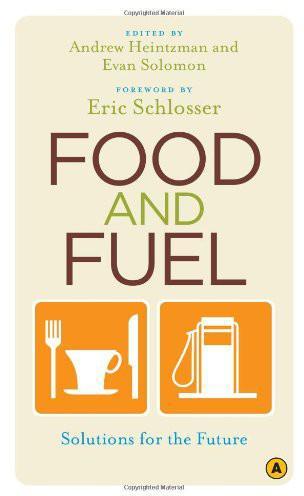
Food and Fuel: Solutions for the Future
by
Andrew Heintzman
,
Evan Solomon
and
Eric Schlosser
Published 2 Feb 2009
I arrived at the community hall in October 2003, part of a group of three to lead a discussion on alternative agriculture. My job was to talk about establishing closer ties between city and country people in hopes of producing better food and giving farmers a bigger share of the grocery dollar. Fred Kirschenmann, of the University of Iowa’s Aldo Leopold Center for Sustainable Agriculture, was also there. He would talk about wheat farmers who had converted their farms into bakeries. Groups of farmers who had established dairy co-operatives to sell better milk at higher prices — and were making more money than ever before. His mission, in short, was to fill the farmers with belief in the future.
…
In the current fur revival, fashion magazine covers feature some of the models who only a decade ago swore they’d rather be naked than wear fur.38 Thus, the creation of lasting shifts in consciousness, and subsequently in behaviour, entails something deeper. Lasting change comes from developing personal relationships with the world and the living things around us. CREATING LASTING CHANGE, INSPIRING A SEA ETHIC In his 1949 book, A Sand County Almanac, Aldo Leopold articulated a framework for how we might consider our relationship with our environment. His idea: that our sense of community can extend beyond humanity to encompass people as well as the living landscape. His sensibility had a moral component, which he called the Land Ethic. “A thing is right,” he wrote, “when it tends to preserve the integrity, stability, and beauty of the biotic community, and wrong when it tends otherwise.”39 Right actions safeguard present and future options — not just for people but for the whole living world.
…
International Commission for the Conservation of Atlantic Tunas, Report of the Standing Committee on Research and Statistics (Madrid, Spain: SCRS, 2002). 36. Matthew Scully, “The Last Gasps of the Fur Trade,” Humane Society of the United States News, Fall 1998. 37. Andrea Cimino, Humane Society of the United States, personal communication, 2004. 38. Matthew Scully, “The Last Gasps of the Fur Trade.” 39. Aldo Leopold, Sand County Almanac (New York: Ballantine Books, 1966). 40. Neil A. Campbell, Biology, third ed. (New York: The Benjamin/Cummings Publishing Company, Inc., 1998). 41. NOAA Fisheries, The Status of U.S. Fisheries, 2002 Report to Congress (May 2003). 42. National Research Council, Sustaining Marine Fisheries (Washington, DC: National Academy Press, 1999). 43.
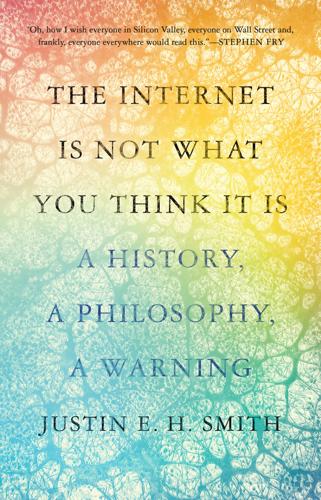
The Internet Is Not What You Think It Is: A History, a Philosophy, a Warning
by
Justin E. H. Smith
Published 22 Mar 2022
Whether this is a temporary limitation of our digital technologies, deriving from the economic model that governs them, or whether it is here to stay, is a question it is likely still too soon to answer. Gadget Being “I do not pretend to know what is moderation, or where the line is between legitimate and illegitimate gadgets.”31 These words were written by the environmentalist Aldo Leopold in the 1940s, concerning what he saw as a worrisome proliferation in his era of new technological devices intended to improve the bounty of the modern hunter. We might at first glance suppose that hunting is an activity the philosophy of which would have little overlap with the philosophy of art or literature or education, and that would not be thrust into crisis by the advent of new technologies in the same way these other domains are.
…
Leibniz, Sämtliche Schriften und Briefe, Berlin-Brandenburgische Akademie der Wissenschaften: Berlin/Potsdam, 1923—. G. W. Leibniz, “Machina arithmetica in qua non additio tantum et subtractio sed et multiplicatio nullo, divisio vero paene nullo animi labore peragantur,” trans. Mark Kormes, in David Eugene Smith, A Source Book in Mathematics, New York: Dover, 1959 [1685], 173–181. Aldo Leopold, A Sand County Almanac, New York: Random House, 1966 [1949]. Rhodri Lewis, Language, Mind and Nature: Artificial Languages in England from Bacon to Locke, Cambridge: Cambridge University Press, 2007. Tristan L’Hermite (ed.), Recueil de pieces en prose, les plus agréables de ce temps. Composées par divers autheurs, Part One, Paris: chez Charles de Sercy, 1659–1663.

The Most Good You Can Do: How Effective Altruism Is Changing Ideas About Living Ethically
by
Peter Singer
Published 1 Jan 2015
When they advocate action to preserve forest or protect endangered species—sometimes killing, in painful ways, large numbers of feral animals in order to do so—they often support their proposals by asserting that biodiversity is an intrinsic value that does not need further justifi-cation from arguments that link it to benefits for humans or other sentient beings. The view that nature is intrinsically valuable was memorably expressed by the early American environmentalist Aldo Leopold. In an oft-quoted passage he advocates a “land ethic” according to which an action is right “when it tends to preserve the integrity, stability, and beauty of the biotic community” and wrong when it has the opposite tendency.14 Effective altruists have not shown much interest in the intrinsic value of nature.
…
Dale Jamieson, Reason in a Dark Time: Why the Struggle Against Climate Change Failed—and What It Means for Our Future (Oxford: Oxford University Press, 2014). GiveWell has reviewed geoengineering as an opportunity for effective philanthropy: http://www.givewell.org/labs/causes/geoengineering. Clive Hamilton expresses concerns in Earthmasters: The Dawn of the Age of Climate Engineering (New Haven: Yale University Press, 2013). 14. Aldo Leopold, “The Land Ethic,” in his A Sand County Almanac (New York: Oxford University Press, 1949). 15. Oscar Horta, “Disvalue in Nature and Intervention,” Pensata Animal 34 (2010), available at https://www.academia.edu/1277396/Disvalue_in_Nature_and_Intervention. See also the essays by Brian Tomasik at http://www.utilitarian-essays.com under the heading “Wild-animal suffering.” 16.

Under a White Sky: The Nature of the Future
by
Elizabeth Kolbert
Published 15 Mar 2021
If earlier losses had unfolded gradually—so gradually that not even the participants would have been aware of what was going on—the advent of technologies like the railroad and the repeating rifle turned extinction into a readily observable phenomenon. In the United States, and indeed around the world, it became possible to watch creatures vanish in real time. “For one species to mourn the death of another is a new thing under the sun,” Aldo Leopold noted in an essay commemorating the passenger pigeon’s passing. In the twentieth century, the biodiversity crisis, as it eventually came to be known, only sped up. Extinction rates are now hundreds—perhaps thousands—of times higher than the so-called background rates that applied over most of geological time.
…
Hornaday, The Extermination of the American Bison with a Sketch of Its Discovery and Life History (Washington, D.C.: Government Printing Office, 1889), 387. “hardly a bone will remain above ground”: Hornaday, The Extermination of the American Bison, 525. “For one species to mourn the death of another”: Aldo Leopold, A Sand County Almanac, reprint ed. (New York: Ballantine, 1970), 117. Extinction rates are now hundreds: Anthony D. Barnosky et al., “Has the Earth’s Sixth Mass Extinction Already Arrived?” Nature, 471 (2011) 51–57. a list of “common birds in steep decline”: The list, compiled by the U.S.

The Secret Life of Groceries: The Dark Miracle of the American Supermarket
by
Benjamin Lorr
Published 14 Jun 2020
gasoline was generally bought out of a barrel: American Museum of Natural History, “Fill ’er Up!,” https://americanhistory.si.edu/america-on-the-move/fill-up, accessed August 30, 2018; John A. Jakle and Keith A. Sculle, The Gas Station in America (Baltimore: Johns Hopkins University Press, 1994). The great naturalist Aldo Leopold once said, “Game is”: Aldo Leopold, Game Management (New York: C. Scribner Sons, 1933). Pronto will pay employees $7,000 per year . . . the precise union equivalent: Joe Coulombe to Tim Morris, “A conversation with Joe Coulombe,” Coriolis Research, March 2005. “Certified was everything . . . All our product came from”: Robin Guentert to author.
…
So much has been written on the physical effect of the automobile on how we get our food—the suburbanization of the supermarket, the drive-in fast food, the ability to do a week’s worth of shopping in a single day. But Joe confronted the automobile and saw something different. Alongside the remaking of our roads, towns, and markets, the automobile was remaking our minds. The great naturalist Aldo Leopold once said, “Game is a phenomenon of the edge,” by which he meant that to spot wildlife you should sit at the boundary between two habitats, where the forest meets the meadow, or the mountain opens onto a stream. So it is with insights: they exist in moments of cultural contrast, and Joe traveling the country by car in the 1940s was able to see clearly one of the defining insights of his career.
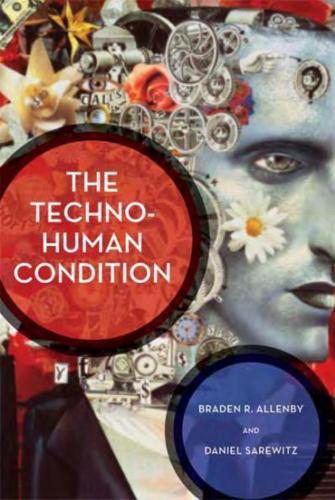
The Techno-Human Condition
by
Braden R. Allenby
and
Daniel R. Sarewitz
Published 15 Feb 2011
(We will call ethics for Level III Earth systems "macroethics.") A well-known example among environmental and sustainability thinkers is the Precautionary Principle, stated in the UN's 1982 World Charter for Nature: "[W]here potential adverse effects are not fully understood, the activities should not proceed." Aldo Leopold provides another example related to sustainability: "A thing is right when it tends to preserve the integrity, stability and beauty of the biotic community. It is wrong otherwise."lo Participants in the transhumanism debates have interpreted particular religious traditions or worldviews to require the banning of certain kinds of research and development, as if the connection from lab bench to moral spillover in society were knowable in advance.
…
Hall makes the general point that culturally productive cities-the Athens of Socrates and Plato, early Rome, Renaissance Florence, Elizabethan London-were all environments characterized by high levels of conflict, intellectual and most often cultural as well. 9. A good example of this literature is Devon 2004. 10. Aldo Leopold, quoted in Sagoff 1988. 11. Rhodes 2003. 12. Among other things, this implies that scientific determinations of validity that depend on interdependent models with similar assumptions must be regarded as useful for generating scenarios, but should not be considered definitive-the reason being that any such model necessarily uses a coherent, and thus limited, ontology to achieve the simplification of reality that is the goal of any modeling activity. 13.
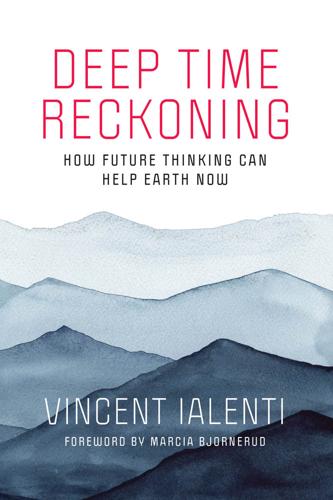
Deep Time Reckoning: How Future Thinking Can Help Earth Now
by
Vincent Ialenti
Published 22 Sep 2020
We debate when and if robots and artificial intelligence will supersede organic human intelligence. We consider the Future of Life Institute’s work to highlight the risks that artificial intelligence may pose. We examine dozens of other long-termist case studies too, again writing about them in term paper essays called “reckonings.” One principle guiding our education would be ecologist Aldo Leopold’s call to think about the living world more holistically “like a mountain.”11 A second would be Finland’s Safety Case experts’ principle of interdisciplinary inquiry, known as “multiple lines of reasoning.” A third would be legal scholar Frank Pasquale’s principle of “attunement”: an embrace of receptivity, sensitivity, and appreciation of one’s wider world as opposed to yearning for mastery, escapism, and mechanistic thinking.
…
Frederick Engels, Socialism: Utopian and Scientific (Moscow: Progress Publishers, 1970 [1880]). 8. Alan Weisman, The World without Us (New York: Thomas Dunne Books/St. Martin’s Press, 2007). 9. Lewis Dartnell, The Knowledge: How to Rebuild Our World from Scratch (New York: Penguin Books, 2014). 10. Walter Miller Jr., A Canticle for Leibowitz (New York: HarperCollins, 1959). 11. Aldo Leopold, A Sand County Almanac (New York: Oxford University Press, 1949). 12. Frank Pasquale, ed., Care for the World: Laudato Si’ and Catholic Social Thought in an Era of Climate Crisis (Cambridge: Cambridge University Press, 2019). 13. Andrew Merrie, “Can Science Fiction Reimagine the Future of Global Development?”
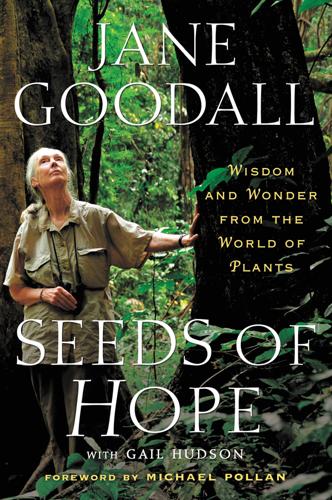
Seeds of Hope: Wisdom and Wonder From the World of Plants
by
Jane Goodall
Published 1 Apr 2013
“Dust Bowl,” in The Reader’s Companion to American History (1991), accessed August 25, 2013. 14. “caused 2.5 million people to leave” Donald Worster, Dust Bowl: Southern Plains in the 1930s (New York: Oxford University Press, 1979), 49. 15. “initiated by Aldo Leopold” A. C. Leopold, “Living with the Land Ethic,” Bioscience 54, no. 2 (February 2004): 149–54. “The Leopold Family Shack and Farm,” Aldo Leopold Foundation, accessed August 25, 2013, http://www.aldoleopold.org/programs/shack.shtml. Craig Maier, “Building Leopold’s Legacy,” American Forests 112, no. 1 (Spring 2006): 41–44. James Morton Turner, The Promise of Wilderness: American Environmental Politics Since 1964 (Seattle: University of Washington Press, 2012). 16.
…
Vast black clouds of dust were swept across the country—much of it actually landing in the Atlantic. It affected some 150,000 square miles of the Central Plains, and caused 2.5 million people to leave their homes. The first project dealing with prairie restoration, in 1935 (when I was one year old), was initiated by Aldo Leopold at the University of Wisconsin Arboretum in Madison, Wisconsin. Eighty acres were successfully planted with native prairie plants, but at that time conservationists were mainly interested in protecting existing wilderness rather than restoring what was damaged. It would be nearly thirty years before a horticulturist from Nebraska, Ray Schulenberg, started work to restore one acre of native prairie on a farm in Illinois.
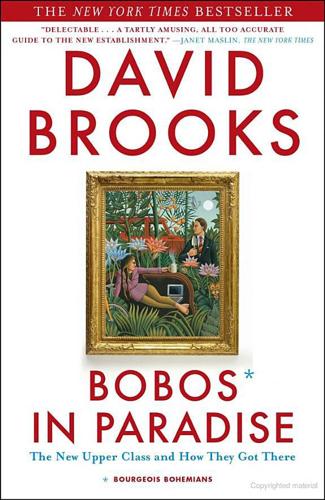
Bobos in Paradise: The New Upper Class and How They Got There
by
David Brooks
Published 1 Jan 2000
I looked around the store and there was nothing but healthy people, educated-class naturalists who seemed to work out regularly, eat carefully, and party moderately. They were evidently well informed about their outdoor-gear options, judging by their boots, packs, and shopping bags. Moreover, as they sat there reading Aldo Leopold’s A Sand County Almanac and such books purchased from the adjacent bookstore, they radiated environmental concern. Here was a community of good stewards, people who were protecting the earth and themselves. Nature used to mean wildness, abandon, Dionysian lustfulness. But here was a set of people who went out into nature carefully, who didn’t want to upset the delicate balance, who studied their options, prepared and trained.
…
I’ve been hanging around this magnificent setting for 30 minutes and I haven’t had one moment of elevated consciousness. The ageless rhythms of creation are happening all around me. The crisp air whispers. The branches sway. The ducks wing by silently. If John Muir were here he’d probably be in rapture. The river would be deep in conversation with Maclean. Aldo Leopold would be writhing around on the ground in ecstasy over the beauty of some nearby twig. But as for me, not a thing. It occurs to me that maybe it’s too late in the season for transcendence. I never noticed it before, but it always seems to be summertime when those hyperspiritual types come to Montana to explore the deeper harmonies.
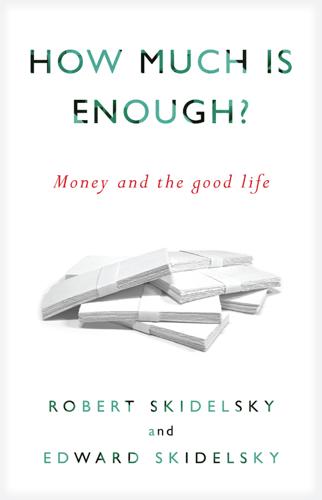
How Much Is Enough?: Money and the Good Life
by
Robert Skidelsky
and
Edward Skidelsky
Published 18 Jun 2012
The predators meanwhile might be fed chunks of ethically farmed meat, or some soya-derived substitute. The fantasy can be developed at length. The point is that this is not a proposal that could possibly be endorsed by anyone concerned with the flourishing of our natural habitat. Another tack for deep ecologists is suggested by Aldo Leopold, an early pioneer of environmental ethics. “A thing is right,” wrote Leopold, “when it tends to preserve the integrity, stability, and beauty of the biotic community. It is wrong when it tends otherwise.”32 Here, the unit of concern is not all species taken individually but the community of species.
…
Arne Naess, “The Basics of the Deep Ecology Movement,” in Alan Drengson and Bill Devall (eds.), The Ecology of Wisdom: Writings by Arne Naess (Berkeley: Counterpoint, 2008), p. 111. 30. Arne Naess, “The Shallow and the Deep, Long-Range Ecological Movement: A Summary,” in Andrew Dobson (ed.), The Green Reader (London: Deutsch, 1991), p. 243. 31. The term speciesism was popularized by Peter Singer, Animal Liberation (Avon, 1977). 32. Aldo Leopold, “A Sand County Almanac,” in Dobson (ed.), The Green Reader, pp. 240–41. 33. For a persuasive defense of this claim, see Michael Thompson, Life and Action (Cambridge, Mass.: Harvard University Press, 2008). 34. Bernard Williams, Ethics and the Limits of Philosophy (London: Routledge, 2006), p. 118. 35.

A Sting in the Tale
by
Dave Goulson
Published 24 Apr 2013
A STING IN THE TALE Dave Goulson JONATHAN CAPE LONDON The last word in ignorance is the man who says of an animal or plant, ‘What good is it?’ If the biota, in the course of aeons, has built something we like but do not understand, then who but a fool would discard seemingly useless parts? To keep every cog and wheel is the first precaution of intelligent tinkering. Aldo Leopold Prologue My interest in bumblebees and other insects dates back to the age of seven, when my family and I moved from a small semi-detached house on the edge of Birmingham’s urban sprawl to a little village called Edgmond in Shropshire. My father had been brought up close by in the market town of Newport and, being a schoolteacher, he was keen that his two sons should get a good education.
…
CHAPTER FIFTEEN Chez Les Bourdons To make a prairie it takes a clover and one bee, One clover, and a bee, And revery. The revery alone will do, If bees are few. Emily Dickinson There are two spiritual dangers in not owning a farm. One is the danger of supposing that breakfast comes from the grocery, and the other that heat comes from the furnace. Aldo Leopold (American environmentalist) I have always hankered after owning some land that I could manage as my own private nature reserve. Gardening for wildlife has been a lifelong occupation, but I really fancied something bigger and more ambitious than my quarter-acre suburban garden. On an academic salary, buying a substantial area of land in the UK was not an option, so I found myself looking further afield.

Animal Spirits: The American Pursuit of Vitality From Camp Meeting to Wall Street
by
Jackson Lears
Given that evidence, it is hard to imagine a more urgent human task than honoring our kinship with other living things, unlike us in many ways but like us in our common residency on earth. A revived vision of universal animacy, equipped with scientific legitimacy, could rekindle a fresh engagement with the natural world. And that, we have reason to hope, is already happening. Epilogue: A Fierce Green Fire SOON AFTER HE graduated from the Yale Forestry School in 1909, Aldo Leopold headed for Arizona to take a job with the U.S. Forest Service—the new federal agency charged with the (equally new) task of “wildlife management.” Theodore Roosevelt had just left the White House and embarked on a big-game hunt in Africa, but his presence could still be felt in government policies toward wild nature.
…
For the sake of planetary survival, the hubris of militarism requires the kind of counterweight their sensibility embodies—a reverence for life itself, a respect for the centrality of chance in human affairs, a reminder that every new deal contains the possibility of a wild card. * * * In 1929, a year after Aldo Leopold left the Forest Service, Ludwig Wittgenstein returned to Cambridge—the first time he had been there since before the war. Keynes was tense but glad. To Lydia, he wrote: “Well, God has arrived. I met him on the 5:15 train.” Wittgenstein proceeded to complete his degree (the Tractatus) and join the philosophy faculty.
…
“Not in our lifetime”: Cheney, cited in Bob Woodward, “CIA Told to Do ‘Whatever Necessary’ to Kill Bin Laden,” Washington Post, October 21, 2001, www .washingtonpost.com/archive/politics/2001/10/21/cia-told-to-do-whatevernecessary-to-kill-bin-laden/19d0e8f1-dbe5–4b07–9c47–44c5b4328f1f/. “irrational exuberance”: Alan Greenspan, “The Challenge of Central Banking in a Democratic Society,” speech to American Enterprise Institute, Dec. 5, 1996, www.federalreserve.gov/boarddocs/speeches/1996/19961205.htm. EPILOGUE: A FIERCE GREEN FIRE “We reached the old wolf”: Aldo Leopold, A Sand County Almanac [1949] (reprint, 2020), 121–22. “Does life only make sense”: Jane Bennett, Vibrant Matter (2010), 53, 113, 119. “he pauses. I wait”: Robert McFarlane, Underland (2019), 65, 67. “Does it change the way”: Ibid., 69. “Living wood, left long”: Ibid., 92, 104. “the force which causes”: Ibid., 112.
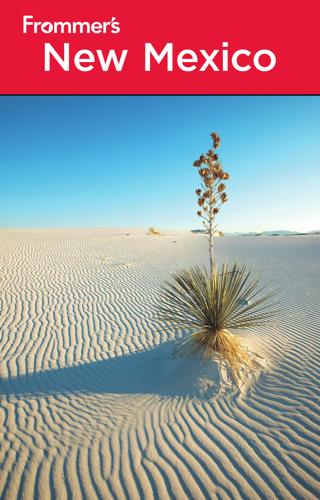
Frommer's New Mexico
by
Lesley S. King
Published 2 Jan 1999
In the southwestern region is the Gila National Forest, which has approximately 1,500 miles of trails, with varying ranges of length and difficulty. Your best bet is to purchase a guidebook devoted entirely to hiking the Gila Forest, but popular areas include the Crest Trail, the West Fork Trail, and the Aldo Leopold Wilderness. One favorite day hike in the forest is the Catwalk, a moderately strenuous hike along a series of steel bridges and walkways suspended over Whitewater Canyon. See chapter 11 for details. In the southeastern region, you’ll find one of my favorite places in all of New Mexico: White Sands National Monument.
…
HIKING It goes without saying that there’s great hiking available in the Gila National Forest (& 575/388-8201; www.nps.gov/gicl), which has approximately 1,500 miles of trails, ranging in length and difficulty. Your best bet for hiking in the area is to purchase a guidebook devoted entirely to hiking the Gila National Forest, but popular areas include the Crest Trail, the West Fork Trail, and the Aldo Leopold Wilderness. One favorite day hike in the forest is the Catwalk, a moderately strenuous hike along a series of steel bridges and walkways suspended over Whitewater Canyon. See “Other Adventures in Gila National Forest,” later in this chapter, for more hiking suggestions. Whenever and wherever you go hiking, be sure to carry plenty of water.
…
For information, contact the visitor center (& 575/536-9461). OTHER ADVENTURES IN GILA NATIONAL FOREST Gila National Forest, which offers some of the most spectacular mountain scenery in the Southwest, comprises 3.3 million acres in four counties. Nearly one-fourth of that acreage (790,000 acres) comprises the Gila, Aldo Leopold, and Blue Range wildernesses. Its highest peak is Whitewater Baldy, at 10,892 feet. Within the forest, six out of seven life zones can be found, so the range of plant and wildlife is broad. You may see mule deer, elk, antelope, black bear, mountain lion, and bighorn sheep. Nearly 400 miles of streams and a few small lakes sustain healthy populations of trout as well as bass, bluegill, and catfish.
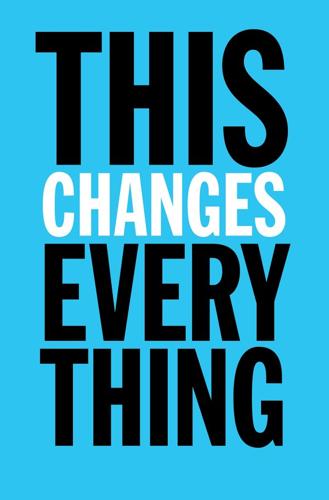
This Changes Everything: Capitalism vs. The Climate
by
Naomi Klein
Published 15 Sep 2014
Sierra Club, http://www.sierraclub.org; John Muir, The Yosemite (New York: Century, 1912), 261–62. 50. Bradford Torrey, ed., The Writings of Henry David Thoreau: Journal, September 16, 1851–April 30, 1852 (New York: Houghton Mifflin, 1906), 165; Aldo Leopold, A Sand County Almanac (Oxford: Oxford University Press, 1949), 171; FOOTNOTE: Henry David Thoreau, Walden (New York: Thomas Y. Crowell, 1910), 393–94. 51. Leopold, A Sand Counrty Almanac, 171; Jay N. Darling to Aldo Leopold, November 20, 1935, Aldo Leopold Archives, University of Wisconsin Digital Collections. 52. Rachel Carson, Silent Spring (New York: Houghton Mifflin, 1962), 57, 68, 297. 53. Ibid., 297. 54. Christian Parenti, “ ‘The Limits to Growth’: A Book That Launched a Movement,” The Nation, December 5, 2012.
…
It is a body, has a spirit, is organic, and fluid to the influence of its spirit, and to whatever particle of that spirit is in me.”I This was a straight repudiation of Francis Bacon’s casting of the earth as an inert machine whose mysteries could be mastered by the human mind. And almost a century after Thoreau, Aldo Leopold, whose book A Sand County Almanac was the touchstone for a second wave of environmentalists, similarly called for an ethic that “enlarges the boundaries of the community to include soils, waters, plants, and animals” and that recognizes “the individual is a member of a community of interdependent parts.”
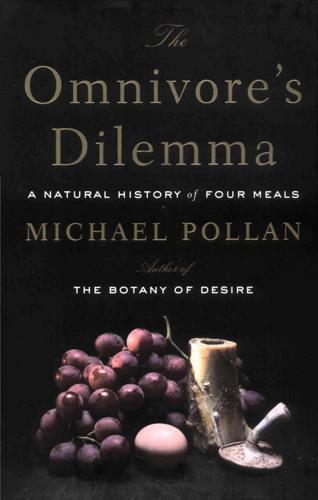
The omnivore's dilemma: a natural history of four meals
by
Michael Pollan
Published 15 Dec 2006
Because what you're feeding your emotions and thoughts is what this is really all about. The way I produce a chicken is an extension of my worldview.You can learn more about that by seeing what's sitting on my bookshelf than having me fill out a whole bunch of forms." I asked him what was on his bookshelf. J. I. Rodale. Sir Albert Howard. Aldo Leopold. Wes Jackson. Wendell Berry. Louis Bromfield. The classic texts of organic agriculture and American agrarianism. "We never called ourselves organic—we call ourselves 'beyond organic' Why dumb down to a lesser level than we are? If I said I was organic, people would fuss at me for getting feed corn from a neighbor who might be using atrazine.
…
I realized that this had been the ultimate destination of the journey I'd been on since traveling to an Iowa cornfield: to look as far into the food chains that support us as I could look, and recover the fundamental biological realities that the complexities of modern industrialized eating keep from our view. ''[T] here is value in any experience that reminds us of our dependency on the soil-plant-animal-man food chain, and of the fundamental organization of the biota," Aldo Leopold wrote in A Sand County Almanac. He was talking specifically about hunting, but the same might be said of gardening or hunting for mushrooms. "Civilization has so cluttered this elemental man-earth relationship with gadgets and middlemen that awareness of it is growing dim. We fancy that industry supports us, forgetting what supports industry."
…
Hers is, by the standards of animal death, a good one. But could I really say that yet? What if it turned out I couldn't eat this meat? I realized that the drama of the hunt doesn't end until the animal arrives at the table. "For one creature to mourn the death of another is a new thing under the sun," wrote Aldo Leopold, himself a deeply conflicted hunter. It is a very good thing indeed, he suggests, but we would do well to recognize just how new it is, what a departure from the usual order of nature this mourning represents. What shames at least some of us about hunting is the same thing that shames us about every other reminder of our origins: that is, the incompleteness of our transcendence of our animal nature.

Affluenza: The All-Consuming Epidemic
by
John de Graaf
,
David Wann
,
Thomas H Naylor
and
David Horsey
Published 1 Jan 2001
As psychologist Chellis Glendinning writes, “We become homeless, alienated from the only home we will ever have.”3 In an evolutionary sense, we risk losing the living scaffold that supports our biological sack of tricks. (For instance, without a healthy universe of decomposers, we’d all be knee-deep in dinosaur bodies.) And we lose a way of knowing what’s right. Ecologist Aldo Leopold believed that “a thing is right when it tends to preserve the integrity, stability and beauty of the biotic community. It is wrong when it tends otherwise.”4 But let’s face it: most of our daily activities and standard operating procedures walk all over Leopold’s law. We don’t have a clue about the biotic community, or what it needs.
…
Duane Elgin in discussion with John de Graaf, July 1996. CHAPTER 24 1. Bill McKibben, The Age of Missing Information (New York: Random House, 1992), 70. 2.Ibid., 71. 3. Chellis Glendinning, “Recovery from Western Civilization,” in Deep Ecology for the 21st Century, ed. George Sessions (Boston: Shambala Press, 1995), 37. 4. Aldo Leopold, A Sand County Almanac (New York: Ballantine Books, 1986), 24. 5. David Sobel in discussion with David Wann, October 2000. 6. David Sobel, Beyond Ecophobia: Reclaiming the Heart in Nature Education (Great Barrington, Mass.: Orion Society, 1996), 34. 7. Robert Greenway, “The Wilderness Effect and Ecopsychology,” in Ecopsychology, ed.
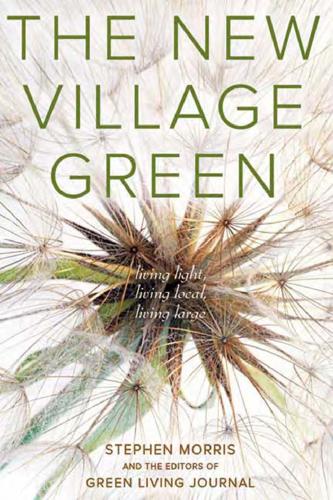
The new village green: living light, living local, living large
by
Stephen Morris
Published 1 Sep 2007
Now that problems with weather/economy/health/lifestyles are cropping up, however, average folks are becoming environmentally responsible — used to be just the ‘kooks’ who carried their own basket into the grocery store and refused bags — now common people are beginning to do it.The idea of environmental accountability is gaining momentum, and that’s such a positive thing!” — Burr Morse Seventh generation farmer and author of Sweet Days and Beyond: The Morse Family — Eight Generations of Maple Sugaring 26 chapter 1 : The Gaia Hypothesis The Gaia Hypothesis: New Village Library Sand County Almanac: Outdoor Essays and Reflections, by Aldo Leopold. Ballantine Books, 1986. Sex, Economy, Freedom & Community: Eight Essays, by Wendell Berry. Pantheon, 1993. The Unsettling of America: Culture and Agriculture, by Wendell Berry. Sierra Club Books, 1986. The Collected Poems of Wendell Berry, 1957-1982, by Wendell Berry. North Point Press, 1987.
…
Much of what we have achieved 258 Colophon since that time is valuable, precious, even ennobling. But there is also much that is suicidal and murderous. We and our heirs have a brief opportunity for a do-over. Othewise, here’s a bit of good news: extinctions happen all the time. In Thinking Like a Mountain Aldo Leopold wrote,“just as a deer herd lives in mortal fear of its wolves, so does a mountain live in mortal fear of its deer.”This idea is strange to an indoor culture accustomed to dominion. Leopold ended his famous essay with these words: We all strive for safety, prosperity, comfort, long life, and dullness.
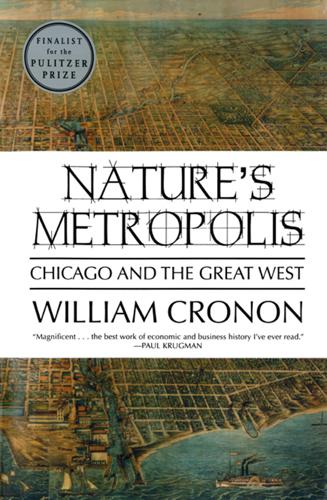
Nature's Metropolis: Chicago and the Great West
by
William Cronon
Published 2 Nov 2009
In its capacity boundless, in its courage indomitable; subduing the wilderness in a single generation, defying calamity, and through the flame and débris of a commonwealth in ashes, rising suddenly renewed, formidable, and Titanic. —FRANK NORRIS, The Pit (1903) An ethic to supplement and guide the economic relation to land presupposes the existence of some mental image of land as a biotic mechanism. We can be ethical only in relation to something we can see, feel, understand, love, or otherwise have faith in. —ALDO LEOPOLD, A Sand County Almanac (1949) Contents MAPS AND GRAPHS PREFACE PROLOGUE: Cloud over Chicago PART I TO BE THE CENTRAL CITY 1: Dreaming the Metropolis Patterns on a Prairie Landscape Booster Dreams Metropolis and Empire Reading Turner Backwards 2: Rails and Water Market in the Mud Artificial Corridors Railroad Time The Logic of Capital PART II NATURE TO MARKET 3: Pricing the Future: Grain Prairie into Farm A Sack’s Journey The Golden Stream Futures Boundary Disputes Necessary Fictions 4: The Wealth of Nature: Lumber Where Value Comes From From Forest to Prairie The Business of Lumber Cargo Market Buying by Rail Lost Hinterlands The Cutover 5: Annihilating Space: Meat The Great Bovine City of the World Slaughtering the Bison Open Range and Feed Lot Porkopolis Storing the Winter Triumph of the Packers Unremembered Deaths PART III THE GEOGRAPHY OF CAPITAL 6: Gateway City Mapping Capital Credit Flows The Urban Hierarchy Gateway Rivalry: Chicago and St.
…
We are forever indebted to such people, since what they have given us becomes in the deepest sense a core part of our own being. Some of them we never meet but only read, and we record our debts to them in footnotes. In my own case, notes cannot adequately acknowledge how much I have learned from reading the likes of Raymond Williams or Aldo Leopold or David Potter or Carl Sauer or even Frederick Jackson Turner or Karl Marx. But these acknowledgments would be radically incomplete if I did not mention three people whose classroom teaching and scholarly examples set me irrevocably on the course that led to this book and to the larger intellectual project of which it is part.
…
That man is, in fact, only a member of a biotic team is shown by an ecological interpretation of history. Many historical events, hitherto explained solely in terms of human enterprise, were actually biotic interactions between people and land. . . . Is history taught in this spirit? It will be, once the concept of land as a community really penetrates our intellectual life. —Aldo Leopold, A Sand County Almanac (1949)1 Growing up in Wisconsin in the 1960s, I found it easy not to think much about Chicago, except as a place that had little to do with my own life and that I didn’t much care to visit. (Like many midwestern children, I made an exception for the wonderful exhibits of the Museum of Science and Industry—those last remaining echoes of the World’s Fair—and later for the Art Institute as well, but the rest of the city offered few attractions.)
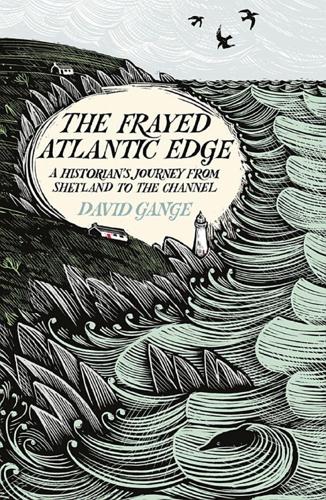
The Frayed Atlantic Edge: A Historian’s Journey From Shetland to the Channel
by
David Gange
Published 10 Jul 2019
He meant that clear-eyed analysis of social problems should go hand in hand with unshakable belief that all such problems can be overcome. Ecologists often think in similar ways to these historians. Their knowledge of the richness of our ecosystem in recent history creates an intense awareness of present degradation. To be an ecologist, wrote the American environmentalist Aldo Leopold, is to ‘live in a world of wounds’. It is also, however, to have at least some knowledge of first aid and a commitment to utopian thinking: ecological knowledge provides the ability to see the mechanisms, however far out of reach, by which current crises might be reversed. However, for both historians and ecologists ‘pessimism of the intellect’ is more easily sustained than ‘optimism of the will’.
…
In the context of oceans and ecology, the work of Jane Bennett, especially Vibrant Matter: A Political Ecology of Things (2009), and Timothy Morton, including Hyperobjects: Philosophy and Ecology after the End of the World (2013) are significant contributions. Ecologically, all owe a great deal to Aldo Leopold whose ‘land ethic’ insisted that, since all plants and animals (including humans) sink or swim together in our fragile ecosystem, all are entitled to citizenship as equal members of the biotic community. The radical work of Donna Haraway and Jason Moore, perhaps best approached through collected editions such as Jason W.
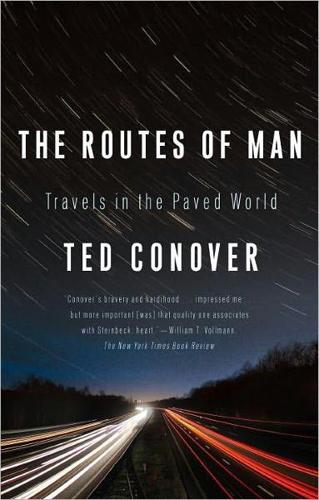
The Routes of Man: How Roads Are Changing the World and the Way We Live Today
by
Ted Conover
Published 15 Jan 2010
Almost every December afternoon there were torrential downpours, which emptied the streets of traffic as they filled them with water. The Madre de Dios River, out my window and down the hill, was brown and swollen, touching the trunks of trees along the riverbank. It may have occasionally risen higher than it was right now, but not often. The American forester and environmentalist Aldo Leopold, who never saw the Amazon, was nonetheless fixated by the Madre de Dios River as seen on a map. Ever since the conquistadors, he wrote in 1924, some maps of South America have shown a short heavy line running eastward beyon5d the Andes, a river without a beginning and without an end, and labeled it the River of the Mother of God.
…
: see Marc Dourojeanni, “Impactos Socioambientales Probables de la Carretera Transoceánica (Río Branco-Puerto Maldonado-Ilo) y la Capacidad de Respuesta del Perú,” p. 313 in La Integración Regional Entre Bolivia, Brasil y Perú. A SCIENTIST FROM THE WOODS HOLE RESEARCH CENTER: Irving Foster Brown, Ph.D., personal communication, March 22, 2002. “OCCASIONALLY, TO SEE HOW FAR HIS OBSESSION”: Mario Vargas Llosa, The Storyteller, pp. 21–22. EVER SINCE THE CONQUISTADORS: Aldo Leopold, “The River of the Mother of God,” in Leopold, The River of the Mother of God & Other Essays. ROAD OR NOT A ROAD? SACBES: The plural of sacbe in Yucatecan Maya languages is sacbeob; I use sacbes for simplicity. INSTEAD OF CURVING SLIGHTLY: Kathryn Gabriel, Roads to Center Place, p. 22. EVIDENCE SUPPORTS THE IDEA: Richard E.

The Great Lakes Water Wars
by
Peter Annin
Published 15 Jun 2018
Clair River, water diversion, Water Resources Development Act, Waukesha Precipitation that falls inside the Basin boundary eventually finds its way to the Great Lakes. Precipitation outside the Basin boundary ends up in the Mississippi River, Hudson Bay, or other watersheds. Contents Acronyms Epigraph by Aldo Leopold Dedication Author’s Note Prologue Part I. Hope and Hopelessness 1. To Have and Have Not 2. The Aral Experiment 3. Climate Change and Water Levels—Going to Extremes? 4. Aversion to Diversion Part II. Battle Lines and Skirmishes 5. Reversing a River 6. Carp in the CAWS 7. Long Lac and Ogoki 8.
…
SNWA Southern Nevada Water Authority WRDA Water Resources Development Act But wherever the truth may lie, this much is crystal clear: our bigger-and-better society is now like a hypochondriac, so obsessed with its own economic health as to have lost the capacity to remain healthy. The whole world is so greedy for more bathtubs that it has lost the stability necessary to build them, or even to turn off the tap. Nothing could be more salutary at this stage than a little healthy contempt for a plethora of material blessings. —Aldo Leopold, A Sand County Almanac (1949) To Meri, Nick, and Reid Author’s Note It has been more than a decade since the first edition of this book was published. During that time, many readers have reached out, wondering if a new edition was in the offing. Several were impatient for an update, given that so much Great Lakes water history had transpired.
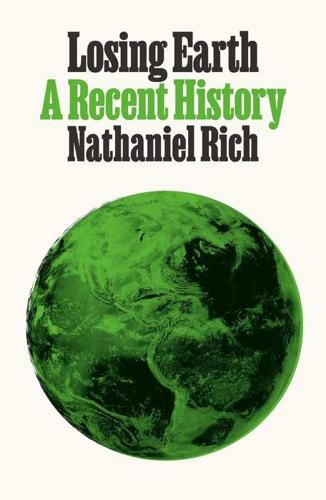
Losing Earth: A Recent History
by
Nathaniel Rich
Published 4 Aug 2018
“The greenhouse effect is an important environmental issue,” said Dan Quayle. “We need to get on with it. And in a George Bush administration, you can bet that we will.” A week before the election, barnstorming in Alabama, Bush interrupted a speech on space exploration with a mournful reflection on global warming and the fate of Earth, summoning his inner Aldo Leopold: “I recall the old fisherman’s prayer: ‘The sea is so large, Lord, and my boat is so small…’ We face the prospect of being trapped on a boat we have irreparably damaged, not by the cataclysm of war but by the slow neglect of a vessel we believed to be impervious to our abuse.” Two weeks after the election, Bush was visited in the White House by former presidents Jimmy Carter and Gerald Ford.

Braiding Sweetgrass
by
Robin Wall Kimmerer
Happily, scientists like Norm Richards and a host of others had a better idea. When I was at the University of Wisconsin in the early 1980s, on summer evenings I would walk with a young Bill Jordan through the trails of the arboretum, where a collection of natural ecosystems had been put in place on abandoned farmland, homage to Aldo Leopold’s advice that “the first step to intelligent tinkering is to save all the pieces.” At a time when the toll taken by places like the Solvay waste beds was finally being understood, Bill envisioned a whole science of restoration ecology, in which ecologists would turn their skills and philosophy to healing land, not by imposing an industrial blanket of vegetation, but by recreating natural landscapes.
…
He is a leader in conserving Galapagos tortoises and Tanzanian toads—but his concerns are also here in Labrador Hollow. He and his students set up the drift fences, patrol the road, and stay up all night counting. Gibbs confesses that sometimes, on rainy nights when he knows the salamanders are moving—and dying—he can’t sleep. He puts on a raincoat and goes out to carry them across. Aldo Leopold had it right: naturalists live in a world of wounds that only they can see. As night deepens, there are no more headlights twisting down the hollow. By midnight even the slowest salamander can cross in safety, so we trudge back to the car and head for home, driving at a snail’s pace until we’re out of the hollow lest our own wheels undo our work.

Who Owns England?: How We Lost Our Green and Pleasant Land, and How to Take It Back
by
Guy Shrubsole
Published 1 May 2019
Overgrazing is a key factor in the poor state of the region’s biodiversity. No one denies that the Lake District, even in its denuded modern state, remains extremely beautiful. But looking at the landscape through the prism of aesthetics is a very different approach to conservation from that of an ecologists. As the US environmentalist Aldo Leopold put it, seeing the world through an ecologist’s eyes is to see ‘a world of wounds’. It means realising that chocolate box landscapes may be pretty, but that our concepts of beauty and the sublime are poor guides to the underlying health of an ecosystem. Our land remains green and pleasant, but it’s also one where many habitats have disappeared and many species are in freefall.
…
It’s a crucial part of resetting the social contract between landowners and the landless: land ownership remains in the hands of a tiny few, but we should all get a chance to share in the natural beauty of the land we live in. 10. Instigate a new land ethic: that land ownership comes with responsibilities as well as rights The American conservationist Aldo Leopold wrote of fostering a new ‘land ethic’, to encourage humanity to treat the earth with care for future generations. Many landowners, particularly aristocratic ones, foster a public image that they are the true stewards of the land, protecting its best interests for the long term. Some genuinely believe this, and act on it accordingly – but certainly not all.
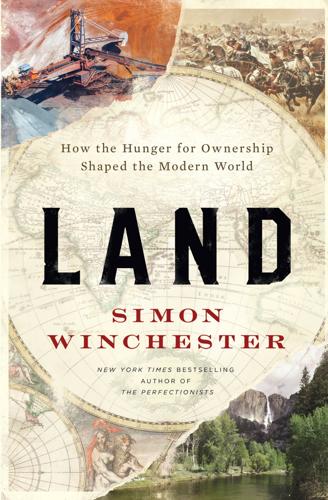
Land: How the Hunger for Ownership Shaped the Modern World
by
Simon Winchester
Published 19 Jan 2021
Some of that bounty is no doubt spent at the casino, though John Muir would presumably disapprove. 5 Trust is Everything We abuse land because we regard it as a commodity belonging to us. When we see land as a community to which we belong, we may begin to use it with love and respect. —ALDO LEOPOLD, A Sand County Almanac (1948) Should one wish to illustrate the meaning of the word placid, then the lower reaches of the Charles River in Boston, viewed on a crisp and breezeless evening in the fall, would serve just perfectly. The water here is wide, flat, and mirror still, the river’s seaward flow near imperceptible.
…
This is community landownership pure and simple. By all accounts, it is an arrangement that appears to work well, offering to the local public the undisputed benefits of health and exercise and peace and quiet and serenity that all need from time to time, and in the manner that the noted ecologist Aldo Leopold had so famously wished for. This is land at its very best—owned by all, used by all, for the good of all. And finally, one level still further down, at a truly grass-roots level, there is the idea of the community land trust. This is an idea bruited very much longer ago, and born not in America but in India; it concerns itself much less with landholdings than with housing, with cities rather than countryside, and with mitigating poverty rather than with mandating serenity and pleasure.
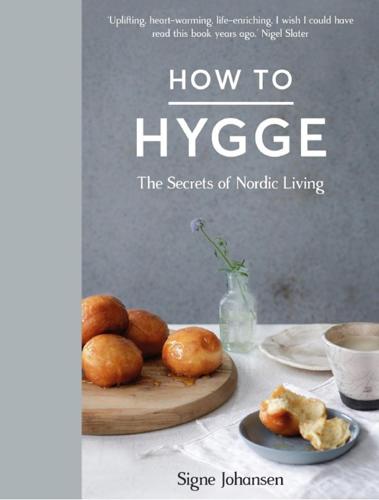
How to Hygge: The Secrets of Nordic Living
by
Signe Johansen
Published 19 Oct 2016
General Reading ∞ Diane Ackerman, A Natural History of the Senses (Vintage Books, 1992) ∞ Michael Booth, The Almost Nearly Perfect People: Behind the Myth of the Scandinavian Utopia (Vintage Books, 2015) ∞ Charlotte and Peter Fiell, Scandinavian Design (Taschen GmbH, 2013) ∞ Tristan Gooley, The Natural Navigator (Virgin Books, 2014) ∞ Yuval Noah Harari, Sapiens: A Brief History of Humankind (Vintage Books, 2015) ∞ Alexandra Heminsley, Running Like a Girl (Windmill Books, 2014) ∞ Anna Kessel, Eat Sweat Play (Macmillan, 2016) ∞ Zach Klein and Steven Leckart, Cabin Porn (Particular Books, 2015) ∞ Aldo Leopold, A Sand County Almanac (OUP, USA, 1968) ∞ Robert Macfarlane, The Old Ways: A Journey on Foot (Penguin Books, 2013) ∞ Marcel Mauss, The Gift (Martino Fine Books, 2011) ∞ Lars Mytting, Norwegian Wood: Chopping, Stacking and Drying Wood the Scandinavian Way (MacLehose Press, 2015) ∞ Robert Penn, The Man Who Made Things Out of Trees (Penguin Books, 2016) ∞ Michael Pye, The Edge of the World: How the North Sea Made Us Who We Are (Penguin Books, 2015) ∞ Richard Sennett, Together (Penguin Books, 2013) and The Craftsman (Penguin Books, 2009) ∞ Simon Singh, Fermat’s Last Theorem (Fourth Estate, 2002) ∞ Henry David Thoreau, Walden; or, Life in the Woods (Princeton University Press, 2016) ∞ Elizabeth Wilhide, Scandinavian Modern Home (Quadrille Publishing, 2008) ∞ Damon Young, How to Think about Exercise (Macmillan, 2014) ∞ Theodore Zeldin, An Intimate History of Humanity (Vintage Books, 1995) Food & Cookery Books ∞ Darina Allen, Forgotten Skills of Cooking (Kyle Cathie, 2009) ∞ Laurie Colwin, Home Cooking (Fig Tree, 2012) ∞ Alan Davidson, North Atlantic Seafood (Prospect Books, 2012) ∞ Olafur Eliasson, Studio Olafur Eliasson: The Kitchen (Phaidon Press, 2016) ∞ Adam Gopnik, The Table Comes First (Vintage Books, 2012) ∞ Sandor Ellix Katz, The Art of Fermentation (Chelsea Green Publishing Co, 2012) ∞ Mark Kurlansky, Cod (Vintage Books, 1999) ∞ Richard Mabey, Food for Free (Collins, 2012) ∞ Harold McGee, McGee on Food & Cooking (Hodder & Stoughton, 2004) ∞ Bee Wilson, First Bite (Fourth Estate, 2015) The books by Diana Henry, Fiona Beckett, Claudia Roden, Nigella Lawson, Richard Bertinet, Tim Hayward, Nigel Slater, Alice Waters, The Barefoot Contessa, Yotam Ottolenghi, Nick Barnard of Rude Health and the Cook’s Illustrated series of cookbooks have all proven invaluable.

Green Interior Design
by
Lori Dennis
Published 14 Aug 2020
Think twice before purchasing accessories and furniture; your space will look cleaner and sleeker, and the environment will thank you too. Our rule of thumb is to choose five pieces of furniture you really love and need in a room and donate the rest. Editing is key! “Conservation is a state of harmony between men and land.” —Aldo Leopold 2 FURNITURE AND ACCESSORIES Most conventional furniture and accessories on the market today are made overseas with little regard for the raw materials that are wastefully excavated; the pollution that is created during manufacturing, packaging, and transport; or the unfair wages and working conditions many factory employees endure.

How to Survive a Pandemic
by
Michael Greger, M.D., FACLM
Emerging human infectious diseases and the links to global food production. Nat Sustain. 2(6):445–456. https://doi.org/10.1038/s41893-019-0293-3. 931. Schrag S, Wiener P. 1995. Emerging infectious disease: What are the relative roles of ecology and evolution? Trends in Ecology and Evolution 10(8):319–324. 932. Aldo Leopold Nature Center. Who was Aldo Leopold. naturenet.com/alnc/aldo.html. 933. Friend M, McLean RG, Dein FJ. 2001. Disease emergence in birds: Challenges for the twenty-first century. The Auk 118:290–303. 934. Pimm SL, Ayres M, Balmford A, et al. 2001. Can we defy nature’s end? Science 293(5538):2207–8. www.sciencemag.org/cgi/content/summary/293/5538/2207?
…
A 2019 review on emerging human infectious diseases concluded that most new animal-to-human diseases have been a result of how we now raise animals for our food.930 Along with human culpability, though, comes hope. If changes in human behavior can cause new plagues, changes in human behavior may prevent them in the future.931 MAN-MADE AIDS: A Clear-Cut Disaster In 1933, Aldo Leopold, the “founding father of wildlife ecology,”932 declared, “The real determinants of disease mortality are the environment and the population,” both of which he said were being “doctored daily, for better or for worse, by gun and axe, and by fire and plow.”933 Since Leopold wrote those lines, more than half of the Earth’s tropical forests have been cleared.934 According to the UN Food and Agriculture Organization, expanding livestock production is one of the main drivers of tropical rainforest destruction, particularly in Central and South America.935 This “hamburgerization” of the rainforests sets the stage for disease emergence and transmission in a number of ways.

The Content Trap: A Strategist's Guide to Digital Change
by
Bharat Anand
Published 17 Oct 2016
Public campgrounds, which originated at Yellowstone, were actually aimed at fire prevention; they created separate areas for tourists in order to prevent campfires from spreading and to more easily determine their location if they arose. But over the next few decades, views on fire would gradually change. Different scientists, environmental researchers, and rangers would find themselves tackling a series of different problems, and reach surprising conclusions in each case. Some, like noted Park Service supervisor Aldo Leopold in the 1930s, in their efforts to restore devastated prairies, would find that seeding native plants had the unintended consequence of weeds also prospering. Fire might solve the problem. Others, called in to figure out a solution to reducing the unsustainably large elk herd in parks, would find that most efforts were either costly or controversial.
…
in the 112-year recorded history National Park Service, Yellowstone in the Afterglow ; Egan, “Ethic of Protecting Land Fueled Yellowstone Fires.” with uncharacteristic speed Ibid. the result of policy that was decades in the making Barker, Scorched Earth, p. 7–8. Harris led troops Ibid., p. 4. they created separate areas Ibid., p. 65. Aldo Leopold Barker describes the results of Leopold’s efforts to restore eroded prairies through a series of experiments: “The fire opened native seeds, unleashing them to grow and thrive. Saplings and other brush that had tenaciously intruded into the area were killed. The invader weeds were brought under control as the almost three hundred species of prairie plants, which had evolved through centuries of frequent fires, took over again.”
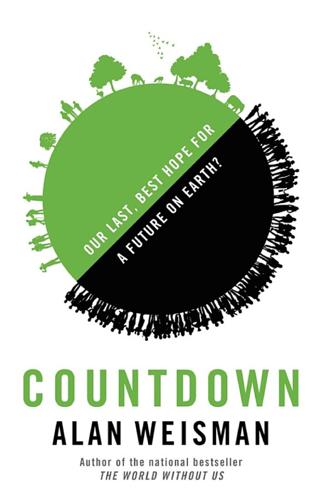
Countdown: Our Last, Best Hope for a Future on Earth?
by
Alan Weisman
Published 23 Sep 2013
Next, the Forest Service opened the game preserve to hunters, several of whom Arizona arrested. That was followed by a severe winter, and the crash that everyone feared commenced. An estimated 70 percent of Kaibab Plateau mule deer starved to death in the North Rim snows. Two of the twentieth century’s foremost ecologists, Aldo Leopold and Rachel Carson, would later cite the tragedy of Kaibab Plateau mule deer as an object lesson in why predators are necessary to nature’s plan. Without such a natural check, a species is doomed to overpopulate its range until it eats itself out of its natural home. Biologist David Brown, professor of wildlife management at Arizona State University, does not disagree—except, he adds, “To say it’s just predators is an oversimplification.
…
Scientific American, May 17, 2011. Bavley, Alan. “Researchers Hopeful About Male Partner for ‘The Pill.’ ” McClatchy Newspapers, February 26, 2012. Belluck, Pam. “Scientific Advances on Contraceptive for Men.” New York Times, July 23, 2011. Binkley, Dan, Margaret M. Moore, William H. Romme, and Peter M. Brown. “Was Aldo Leopold Right About the Kaibab Deer Herd?” Ecosystems, vol. 9 (2006):227–41. Brean, Henry. “Concrete Trucks Rev Up for Third Intake Project at Lake Mead.” Las Vegas Review-Journal, September 25, 2012. Brown, J. M. “ ‘Fresh-Squeezed Water’: Desalination Debate Raises Financial, Environmental and Philosophical Concerns.”

To Show and to Tell: The Craft of Literary Nonfiction
by
Phillip Lopate
Published 12 Feb 2013
Fisher: The Gastronomical Me, The Art of Eating Osamu Dazai: Self Portraits Natalia Ginzburg: The Little Virtues, A Place to Live Roland Barthes: Mythologies, Barthes on Barthes Hubert Butler: Independent Spirit Joseph Brodsky: Less Than One Guy Davenport: The Geography of the Imagination, The Hunter Gracchus Gore Vidal: United States: Essays 1952–1992 Some Contemporary Essayists (Personal, Familiar, and Humorist) Joan Didion: Slouching toward Bethlehem, The White Album Edward Hoagland: Heart’s Desire, Sex and the River Styx Annie Dillard: Pilgrim at Tinker’s Creek, Teaching a Stone to Talk Joseph Epstein: The Middle of My Tether Adrienne Rich: On Lies, Secrets, and Silence Vivian Gornick: Approaching Eye Level, The Situation and the Story William Gass: On Being Blue Phillip Lopate: Getting Personal, Notes on Sontag Nancy Mairs: Plaintext, Waist-High in the World Scott Russell Sanders: The Paradise of Bombs Gerald Early: Tuxedo Junction Daniel Harris: The Rise and Fall of Gay Culture Anne Fadiman: Ex Libris David Sedaris: Naked Sara Suleri: Meatless Days Lynn Freed: Reading, Writing, and Leaving Home Jonathan Lethem: The Disappointment Artist John D’Agata: Halls of Fame, The Lost Origins of the Essay Emily Fox Gordon: Book of Days Lia Purpura: Rough Likeness Eula Biss: Notes from No Man’s Land Siri Hustvedt: Living, Thinking, Looking Nature, Science, Medicine, and the Environment Richard Jeffries: The Life of the Fields J. Henri Fabre: Fabre’s Book of Insects John Muir: The Mountains of California Charles Darwin: The Voyage of the Beagle, On the Origin of Species William Bartram: Travels and Other Writings John James Audubon: Writings and Drawings John Burroughs: Birch Browsings Aldo Leopold: Sand County Almanac Henry Beston: The Outermost House Edward Abbey: Desert Solitaire Loren Eiseley: The Immense Journey, The Night Country Stephen Jay Gould: The Panda’s Thumb Lewis Thomas: The Lives of a Cell: Notes of a Biology Watcher F. González-Crussi: Notes of an Anatomist Oliver Sacks: The Man Who Mistook His Wife for a Hat, An Anthropologist on Mars A.
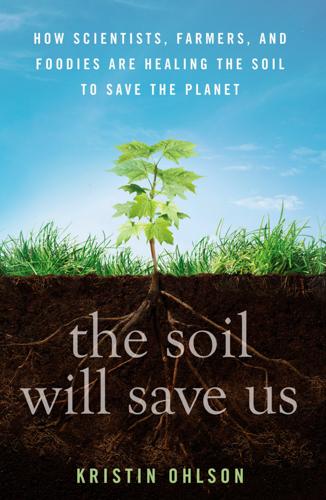
The Soil Will Save Us
by
Kristin Ohlson
Published 14 Oct 2014
Courtney White is familiar with the myopic views of environmentalists, since he had been an activist himself. In his essay, he argues that their disregard for the livelihoods of rural people led to several problems. Their economic agenda of tourism and recreation had unforeseen negative effects, including congestion, pollution, and exurban sprawl. And they lost what Aldo Leopold, one of environmentalism’s patron saints in the 1940s, called the feeling of “the soil between our toes,” which White interprets as an intimate understanding of how the land actually works. Leopold had always insisted that people and their economic activities are part of the environment. “There is only one soil, one flora, one fauna, and one people, and hence only one conservation problem,” White quotes from Leopold’s 1935 lecture, “Land Pathology.”
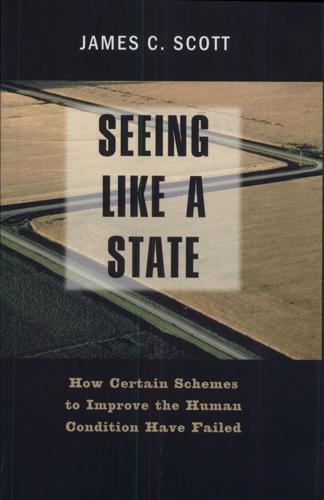
Seeing Like a State: How Certain Schemes to Improve the Human Condition Have Failed
by
James C. Scott
Published 8 Feb 1999
A rat is killed, a man broken, a horse splashes."3 Favor reversibility. Prefer interventions that can easily be undone if they turn out to be mistakes.4 Irreversible interventions have irreversible consequences.5 Interventions into ecosystems require particular care in this respect, given our great ignorance about how they interact. Aldo Leopold captured the spirit of caution required: "The first rule of intelligent tinkering is to keep all the parts"° Plan on surprises. Choose plans that allow the largest accommodation to the unforeseen. In agricultural schemes this may mean choosing and preparing land so that it can grow any of several crops.
…
Quoted in Roger Penrose, "The Great Diversifier," a review of Freeman Dyson, From Eros to Gaia, in the New York Review of Books, March 4, 1993, p. 5. 4. Like all rules of thumb, this rule is not absolute. It could be waived, for example, if catastrophe seems imminent and quick decisions are essential. 5. This is, I believe, the strongest argument against capital punishment for those who are not opposed to it on other grounds. 6. Aldo Leopold, quoted in Donald Worster, Nature's Economy, 2nd ed. (New York: Cambridge University Press, 1994), p. 289. 7. The typical social science solution to this sort of issue is to turn it into a quantitative exercise by, say, asking citizens to assess the well-being of the community on a predetermined scale. 8.
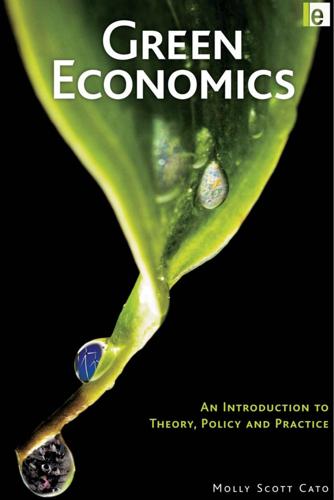
Green Economics: An Introduction to Theory, Policy and Practice
by
Molly Scott Cato
Published 16 Dec 2008
A fundamental difference between the indigenous concept of land and the western idea is that indigenous peoples belong to the land rather than the land belonging to them.6 While there is no single view among green economists about whether or not land ownership is just and appropriate, the fact that this question is debated indicates in itself how powerful has been the influence of indigenous thinking. For Aldo Leopold, the intimate relationship with land, which he termed ‘land ethic’, was necessary to underpin both human relationships and ecological respect: ‘when we see land as a community to which we belong, we may begin to use it with love and respect. There is no other way for land to survive the impact of mechanized man.’7 Other commentators suggest that giving indigenous peoples the rights to their own land is a better guarantee of their protection than leaving them open to exploitation by corporations.8 The LAND AND THE BUILT ENVIRONMENT 189 BOX 12.1 MST: THE LAND RIGHTS CAMPAIGN IN BRAZIL One of the most prominent movements for land reform is the MST in Brazil (Movimento dos Trabalhadores Rurais Sem Terra, or Movement of Landless Rural Workers).
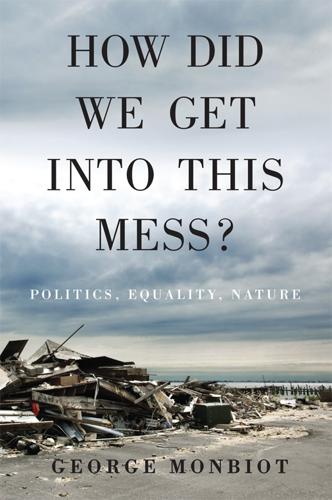
How Did We Get Into This Mess?: Politics, Equality, Nature
by
George Monbiot
Published 14 Apr 2016
But the little we now know of trophic cascades and the unexpected complexities they reveal, which doubtless presages a much deeper and richer understanding in the years to come, enhances for me the awe with which I contemplate our world of wonders. It makes me all the more determined to protect it from destruction. 12 December 2014 16 Civilisation Is Boring ‘One of the penalties of an ecological education is that one lives alone in a world of wounds’, the pioneering conservationist Aldo Leopold wrote. ‘An ecologist must either harden his shell and make believe that the consequences of science are none of his business, or he must be the doctor who sees the marks of death in a community that believes itself well and does not want to be told otherwise.’1 I remembered that when I read the news that the world has lost 52 per cent of its vertebrate wildlife over the past forty years.2 It’s a figure from which I’m still reeling.
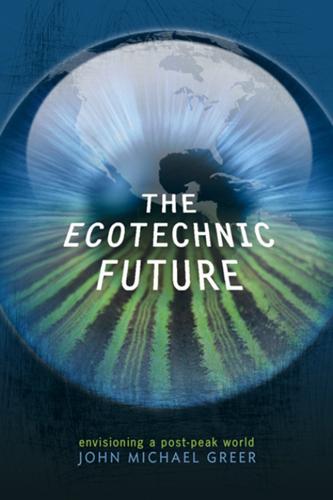
The Ecotechnic Future: Envisioning a Post-Peak World
by
John Michael Greer
Published 30 Sep 2009
Still, just as Greek logic was pulled out of the wreck of the classical world and put to use in Islam and medieval Christianity, the scientific method — as well as a good deal of today’s scientific knowledge, and even whatever remnants of today’s scientific professions get through the next few rounds of crisis — could function just as well in a culture of environmental humility as they do in today’s culture of environmental hubris. The most likely bridge between the two is again the science of ecology. Its vision of nature has already inspired such impressive prefigurings of a culture of environmental humility as Aldo Leopold’s land ethic and the passionate love of nature that fires so many of today’s green activists. As just noted, every culture draws on the techniques it finds most useful for metaphors to make sense of the universe. The worldview of industrial civilization drew most of its fundamental ideas, and even more of its symbolism and emotional appeal, from the world that was revealed by Galileo and Newton in the seventeenth century, and embodied in the first wave of industrial technology a century later.
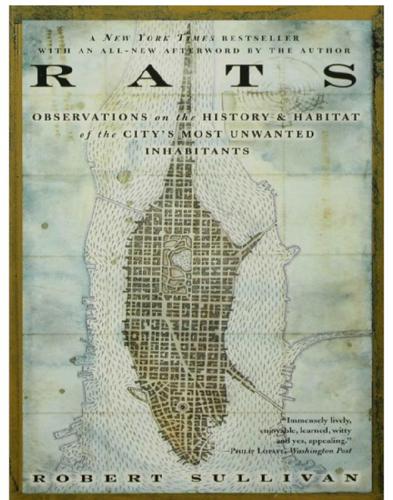
Rats
by
Robert Sullivan
Published 8 May 2009
The U.S. government was concerned that the Germans might use rats to spread disease through Europe, and then, after the war, with Europe's infrastructure in ruins, the government was concerned about rats ruining food supplies and spreading disease on their own. The Rodent Ecology Project was founded in Baltimore at Johns Hopkins University, and Davis worked there with the other founding fathers of rat studies: Robert Emlen, who, prior to working with Dave Davis, also worked with Aldo Leopold, an ecologist in Wisconsin who argued for a "land ethic," suggesting that humans ought to think about the relationship with the land on which they live; John Calhoun, who studied rat social behavior and in 1963 reported that rats left to overpopulate in a cramped room set about killing, sexually assaulting, and cannibalizing each other; Curt Pdchter, who started trapping rats with Davis, then went on to discover similarities between rats' and humans' diets and began experimenting on rats in laboratories, which led to all kinds of man-related studies on laboratory rats, like the one I read about in a newspaper recently that showed how rats will kill themselves overexercising; and finally, William Jackson, who advised governments around the world on rat control and rat poisons and then on what to do about rats that became immune to rat poisons.

Garbage Land: On the Secret Trail of Trash
by
Elizabeth Royte
Published 1 Jan 2005
It made me a little sad to think of mindfulness fading. And so I retired from weighing my garbage but continued to sort it into piles. It was a habit, and I’d feel guilty if I quit. I knew too much about where my refuse was headed, about its potential impacts on people and other living things. The conservationist Aldo Leopold once wrote, in his essay “Round River,” “One of the penalties of an ecological education is that one lives alone in a world of wounds.” I’d always found the quote a little grandiose, but it came to mind whenever I was tempted to put something divertible into the regular trash. I wasn’t convinced my compulsive sorting was doing much good, but it made me feel less bad about so many other things.
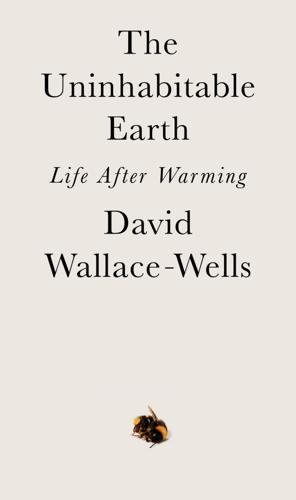
The Uninhabitable Earth: Life After Warming
by
David Wallace-Wells
Published 19 Feb 2019
Norton, 2018). In this book, Frank writes, “Our technology and the vast energies it has unleashed give us enormous power over ourselves and the world around us. It’s like we’ve been given the keys to the planet. Now we’re ready to drive it off a cliff.” “thinking like a planet”: The phrase also recalls Aldo Leopold’s “thinking like a mountain,” which first appeared in his Sand County Almanac of 1937, and which provided the title of an excellent meditative essay by Jedediah Purdy on nature writing and our changing relationship to the natural world, published in n+1 in 2017. Personally the perspective strikes me as too Stoic—a mountain would not much care if humans, a single species, suffered tremendous setbacks, and the same is true for the planet as a whole.

Cadillac Desert
by
Marc Reisner
Published 1 Jan 1986
But now everyone knew the river was overallocated, and everyone wanted to see it replenished by water from somewhere else, so all the basin states were in favor of the Grand Canyon dams. Never before had conservationists challenged the collective will of seven states. Brower and the Sierra Club led the fight. As in the Echo Park battle, he managed to recruit heavyweight expertise. Luna Leopold, one of the country’s leading hydrologists and the son of Aldo Leopold, the famous ecologist, was willing to take a swipe at the Bureau’s flow calculations. Brower found some nuclear engineers from M.I.T. and Bechtel who were eager to demonstrate why nuclear reactors were a cheaper alternative. (Brower would later become one of the leading opponents of nuclear fission.)
…
Klamath Diversion and Narrows Dam and Kyncl, George Lake Crowley Lake Mead, siltation of Lake Missoula Lake Powell Lamm, Richard D. Narrows Dam and Laney, Nancy Larson, Olie Las Vegas, Nev., Colorado River and Lava Cliffs, Powell’s description of Lava Falls Laxalt, Paul Le Conte, Joseph Lelande, Harry Leopold, Aldo Leopold, Luna Lewis, Meriwether Lineweaver, Goodrich Lippincott, Joseph B. background of and diverting Owens Valley water to Los Angeles and violence in Owens Valley Livermore, Norman Loewenthal, Henry Long, Huey Long, Russell Long, Stephen Long Beach, Calif., tidelands oil contract of Long Valley, Calif., proposed dam in Los Angeles, Calif.

Business Lessons From a Radical Industrialist
by
Ray C. Anderson
Published 28 Mar 2011
Still later, Woodrow Wilson created the National Park Service, along with the Grand Canyon, Yosemite, and Grand Teton National parks. So the notion evolved that ethics should extend to the land, and become part of our system of laws. The ethical thing to do, the right thing to do, was to protect these cathedrals of natural beauty for all people and for all time. Then, in 1933, Aldo Leopold pushed the definition of “land ethics” when he observed that what happened to the plants native to even the most common, unscenic places of the world determined something he called “habitat.” That’s Latin for “it inhabits” and refers to a natural area where specific organisms can live. Habitat, in turn, supports animal life, dictating what species are able to live there and prosper.
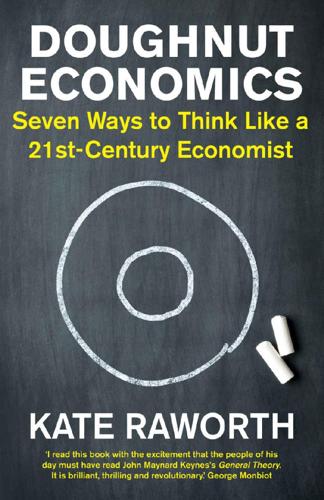
Doughnut Economics: Seven Ways to Think Like a 21st-Century Economist
by
Kate Raworth
Published 22 Mar 2017
It also underpins the language of environmental economics, which frames the living world as a storehouse of ‘natural resources’, as if it were waiting – like a pile of Lego blocks – to be transformed by man into something useful to man. Rather than presiding at the pinnacle of nature’s pyramid, however, humanity is woven deep into nature’s web. We are embedded in the living world, not separate from or above it: we live within the biosphere, not on the planet. As the American ecologist Aldo Leopold deftly put it, we need to transform the way we see ourselves, ‘from conqueror of the land-community to plain member and citizen of it’.41 Thanks to forty years of Earth-system research, we have a rapidly improving scientific understanding of how the Holocene epoch – with its stable climate, ample fresh water, protective ozone layer, and abundant biodiversity – has enabled humanity to thrive, and hence how we depend upon Earth’s continual flourishing in turn.
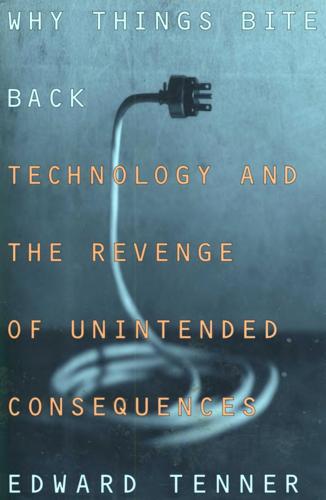
Why Things Bite Back: Technology and the Revenge of Unintended Consequences
by
Edward Tenner
Published 1 Sep 1997
It takes a big reduction in disease and famine to let people start worrying about physical hazards. But once everyday threats have been sufficiently reduced, extraordinary ones take on more importance. In fact, throughout the severe floods and droughts of the U.S. Depression era, "natural hazards" did not exist as a scientific or academic field. Nor, despite the influence of writers like Aldo Leopold and Rachel Carson, was there a field of "environmental studies." A certain sense of well-being was needed before men and women could advance to a new level of worrying.' Concern was justified. The number of the world's natural disasters exceeding a hundred deaths did rise sharply in the 196os.

Whole Earth: The Many Lives of Stewart Brand
by
John Markoff
Published 22 Mar 2022
In Whole Earth Discipline, Brand made a decidedly non-neoliberal argument: “The scale of the climate challenge is so vast that it cannot be met solely by grassroots groups and corporations, no matter how Green. The situation requires Government fiat to set rules and enforce them.”[13] Brand retained a passionate commitment to the ideas of Aldo Leopold, an author, a philosopher, and an ecologist who is generally seen as the father of the science of wildlife management. He treated Leopold’s Sand County Almanac, a collection of essays enumerating a “land ethic” regarding the responsibility that people hold toward the land they inhabit, as a “holy writ.”
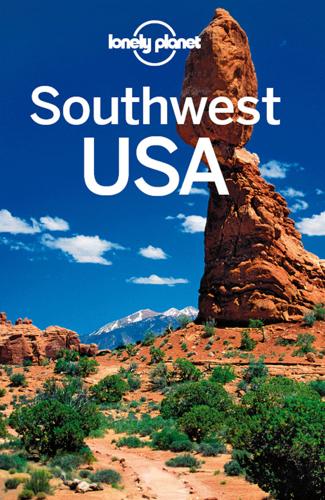
Southwest USA Travel Guide
by
Lonely Planet
The town also serves as the gateway to the Gila National Forest, just north of town. Gila National Forest If you’re looking for isolated and undiscovered and a real sense of wildness, ‘The Gila’ has it in spades. Its 3.3 million acres cover eight mountain ranges, including the Mogollon, Tularosa, Blue and Black. It’s here that legendary conservationist Aldo Leopold spearheaded a movement to establish the world’s first designated wilderness area, resulting in the creation of the Gila Wilderness in 1924; in 1980, the adjacent terrain to the east was also designated as wilderness and named after Leopold. This is some rugged country, just right for black bears, mountain lions and the reintroduced Mexican grey wolves.
…
If you’ve got a high-clearance 4WD vehicle and a little extra time, you can take one of New Mexico’s most scenic roads from the Silver City area right through the heart of the Gila. From Hwy 35 north of Mimbres, Forest Rd 150 wends through the forest for 60 miles before emerging onto the sweeping Plains of San Agustin. Another option off of Hwy 35 is to drive the rough Forest Rd 151 to the Aldo Leopold Wilderness boundary, then hike a few miles up to the top of McKnight Mountain, the highest summit in the Black Range. For serenely comfortable forest slumber, rent one of the five stunningly situated Casitas de Gila Guesthouse (877-923-4827; www.casitasdegila.com; off Hwy 180, near Cliff; casitas $160-210; ), adobe-style casitas set on 90 beautiful acres.

The Food Revolution: How Your Diet Can Help Save Your Life and Our World
by
John Robbins
Published 14 Sep 2010
And there are nutritional advantages, too, according to a study published in the Journal of Applied Nutrition that analyzed the mineral content of organically and conventionally grown apples, potatoes, pears, wheat, and sweet corn over a two-year period... WHAT WE KNOW Amount of minerals in organic food compared to conventional food:Z° In dramatic contrast to genetic engineering, organic firming is an expression of what Aldo Leopold called "a land ethic," extending the concept of community to include all the species of life with which we share the planet. It upholds the understanding that, as Leopold put it, "a thing is right when it tends to preserve the integrity, stability, and beauty of the biotic community. It is wrong when it tends otherwise....
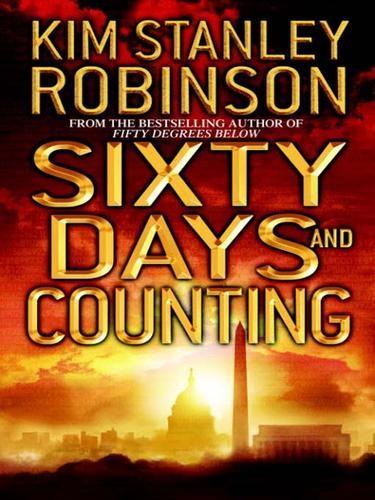
Sixty Days and Counting
by
Kim Stanley Robinson
Published 27 Feb 2007
But everyone needed a set of operating procedures to navigate the day. A totalizing theory forming the justification for a rubric for the daily decisions. The science of that particular Wednesday. Using flawed equipment (the brain, civilization) to optimize results. Most adaptive practices. Robustness. Something from ecology, from Aldo Leopold: What’s good is what’s good for the land. Something from Rudra (although he said from the Dalai Lama, or the Buddha): Try to do good for other people. Your happiness lies there. Try it and see. Make the experiment and analyze it. Try again. Act on your desires. So what do you really want? And can you really decide?
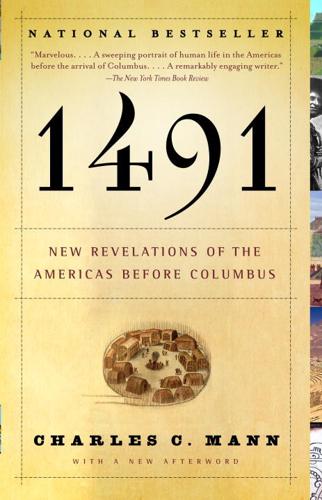
1491
by
Charles C. Mann
Published 8 Aug 2005
Incredibly, hunters in the countryside captured tens of thousands of pigeons in nets and sent the living birds to urban hunting clubs for target practice. Then, suddenly, the passenger pigeon vanished—the last bird, Martha, named after Martha Washington, died on September 1, 1914. The passenger pigeon remained an emblem of natural bounty, but now it also represented the squandering of that bounty. In 1947 the conservationist Aldo Leopold dedicated a monument to the pigeon near the site of its greatest recorded nesting, at which hunters slaughtered 1.5 million birds. The plaque read: “This species became extinct through the avarice and thoughtlessness of man.” The pigeon should indeed stand as a rebuke and warning. But if archaeologists are right it should not be thought of as a symbol of wilderness abundance.
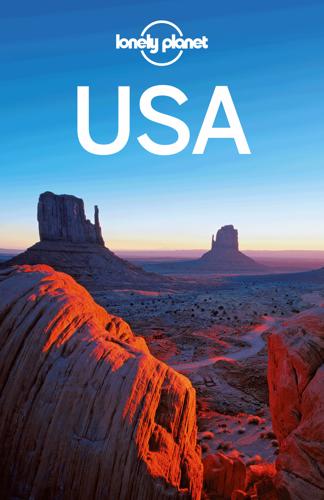
USA Travel Guide
by
Lonely, Planet
Ecology proved yet another humbling moment for humankind – already knocked from the center of the universe, and swinging arm in arm with monkeys, thanks to Charles Darwin – with its assertion that people were in fact dependent on nature, not in charge of it. With ecology, America’s 19th-century conservation movement became the modern environmental movement. Aldo Leopold was the first writer to popularize an ecological world view with his idea of a ‘land ethic,’ which proposed that humans must act with respectful stewardship toward all of nature, rather than celebrating the parts they like and abusing the rest. The 1962 publication of Silent Spring, by Rachel Carson, provided the shocking proof: this exposé of how chemicals such as DDT were killing animals and poisoning the land horrified the nation and inspired a wide-ranging grass-roots movement.
…
Energy-efficient windows, more ecofriendly building materials and water conservation features (like greywater systems that utilize rainwater) are just a few features of LEED-certified buildings emerging nationwide. » Greenways Back in the 1980s, the notion of riding a bicycle down Broadway in New York City seemed pure suicide. Today, Gotham – along with Chicago, Washington, DC, and other cities – has added hundreds of miles of bike lanes, and urbanites are finding greener (and sometimes faster) ways of getting around town. Environmental Laws & Climate Change Aldo Leopold’s A Sand County Almanac (1949) became a touchstone for American naturalists, and it remains a humble, unpretentious and powerfully moving testimony to the power of leaving wilderness undisturbed. Over the following decades, the USA passed a series of landmark environmental and wildlife laws that resulted in significant improvements in the nation’s water and air quality, and the partial recovery of many near-extinct plants and animals.
…
To stop wolves from devouring the livestock, the wolf’s extermination soon became official government policy. Up until 1965, for $20 to $50 an animal, wolves were shot, poisoned, trapped and dragged from dens until in the lower 48 states only a few hundred gray wolves remained in northern Minnesota and Michigan. In 1944, naturalist Aldo Leopold called for the return of the wolf. His argument was ecology, not nostalgia. His studies showed that wild ecosystems need their top predators to maintain a healthy biodiversity; in complex interdependence, all animals and plants suffered with the wolf gone. Despite dire predictions from ranchers and hunters, gray wolves were reintroduced to the Greater Yellowstone Region in 1995–96 and red wolves to Arizona in 1998.
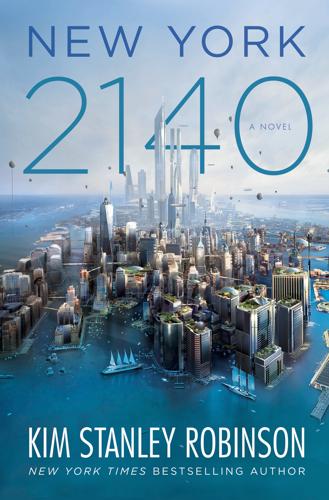
New York 2140
by
Kim Stanley Robinson
Published 14 Mar 2017
It suggests creating something like a climax forest. And it has a long history in philosophy and political economy. There are some bad interpretations of it, but that will be true of any rule. It’s serviceable as a first approximation. “One I like better comes from right here in Wisconsin. It’s one of the sayings of Aldo Leopold, so it’s sometimes called the Leopoldian land ethic. ‘What’s good is what’s good for the land.’ “This one takes some pondering. You have to derive the consequences that would follow from it, but that’s true of any master rule. What would it mean to take good care of the land? It would encompass agriculture, and animal husbandry, and urban design.

Parks Directory of the United States
by
Darren L. Smith
and
Kay Gill
Published 1 Jan 2004
Activities: Camping, hunting, fishing, rafting, hiking, horseback riding, mountain biking, ORV riding, bird watching, cross-country skiing, snowshoeing. Special Features: Forest is semi-desert to alpine country, most of it remote and undeveloped, with elevations of 4,500 to 10,700 feet. Three wilderness areas: Gila Wilderness, the first designated wilderness in the nation, Aldo Leopold Wilderness, and Blue Range Wilderness. Major rivers include Gila River, Mimbres River, and San Francisco River. Points of interest include Catwalk National Recreation Trail, a unique trail of suspended walkways; Gila Cliff Dwellings National Monument (see entry in national parks section), well-preserved cliff dwellings dating back to 1200; natural hot springs.